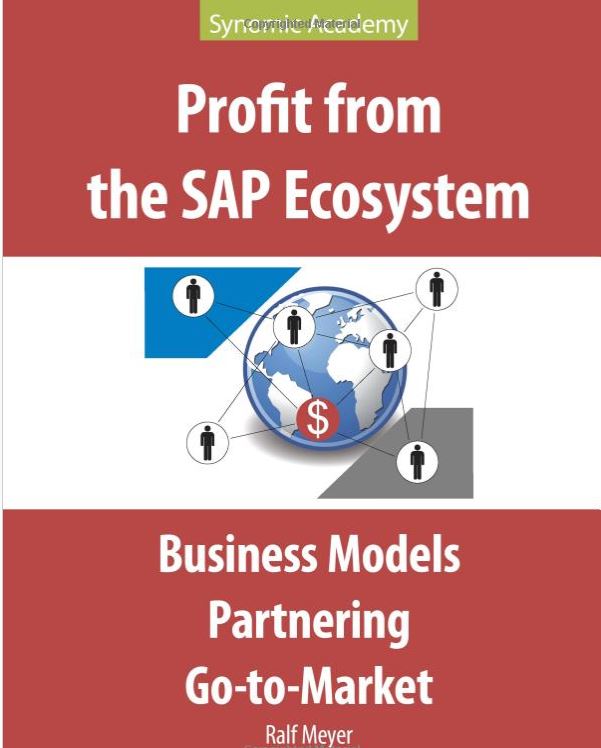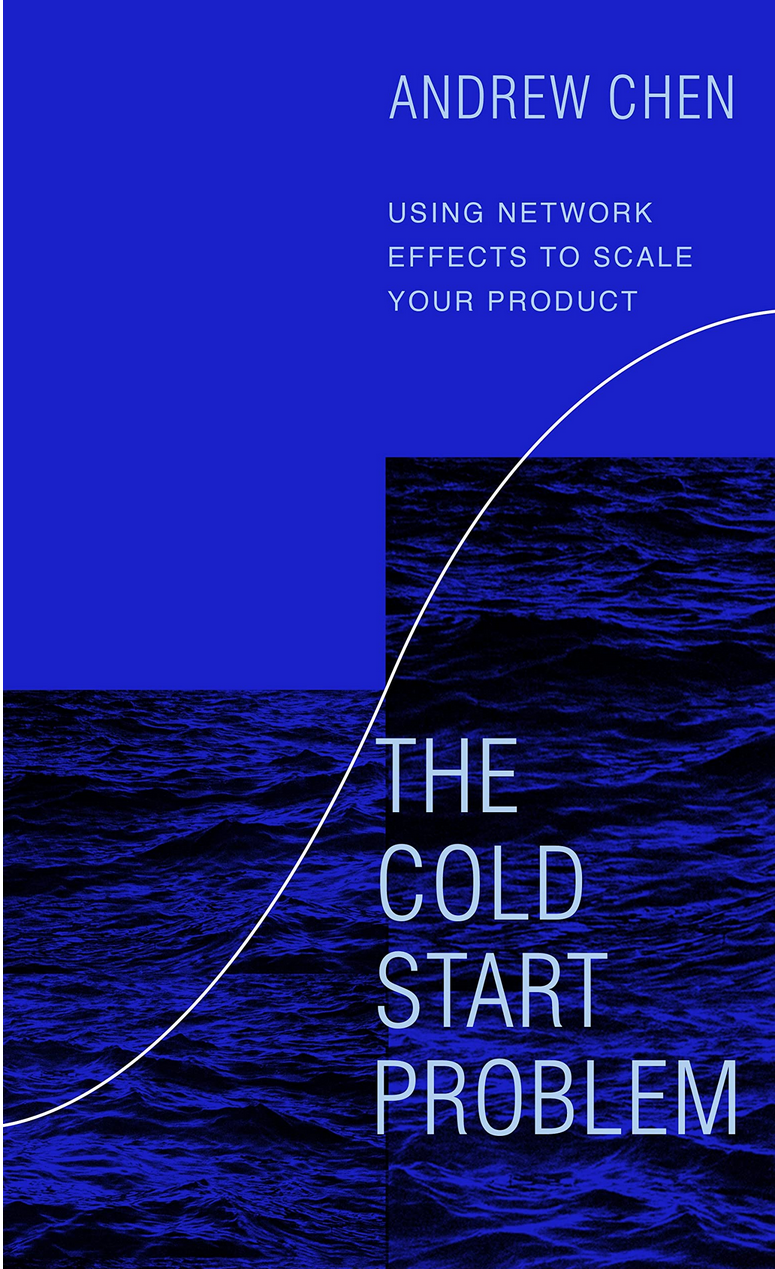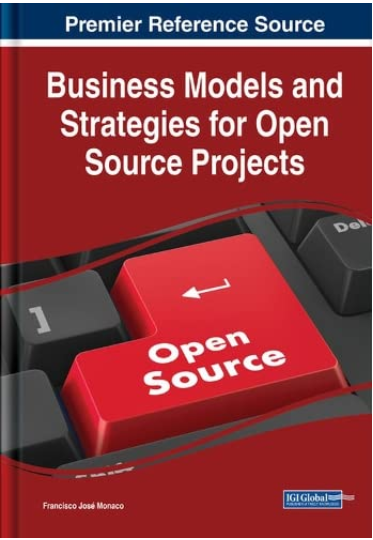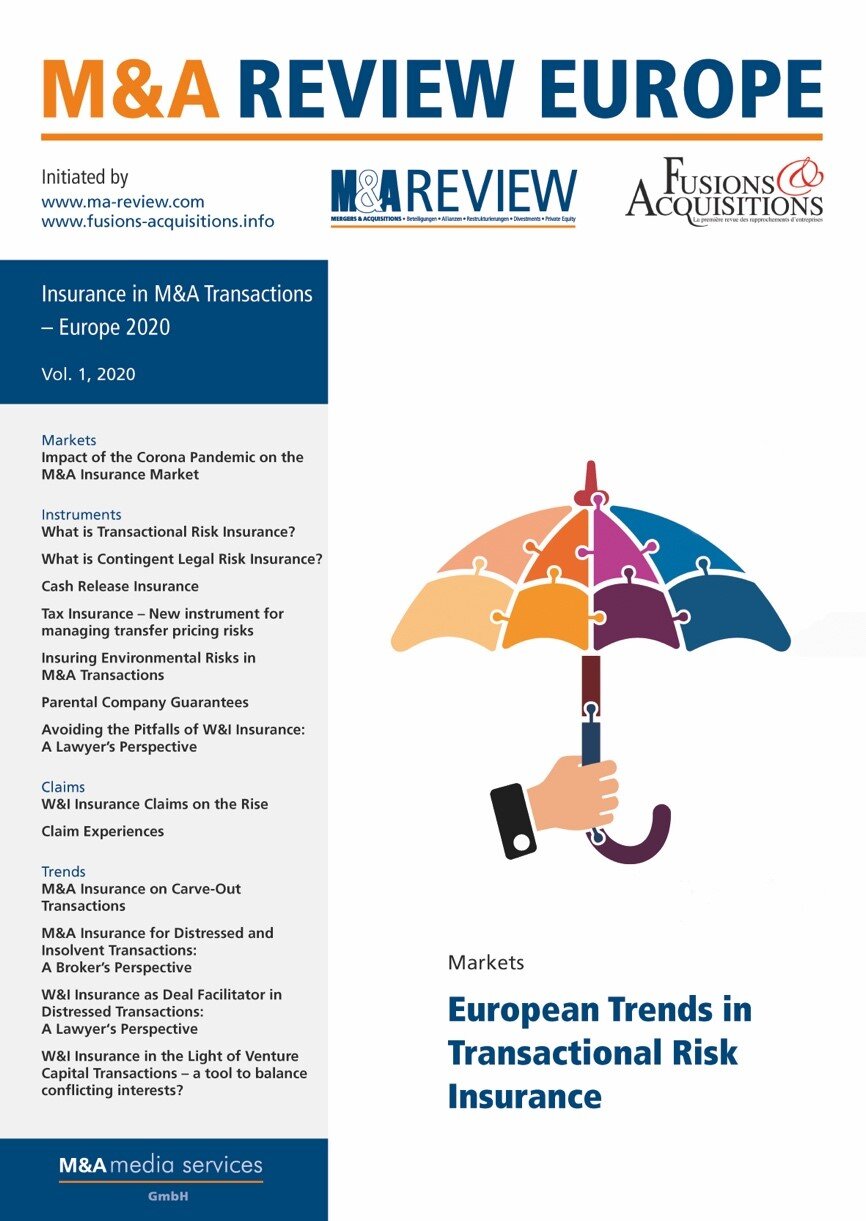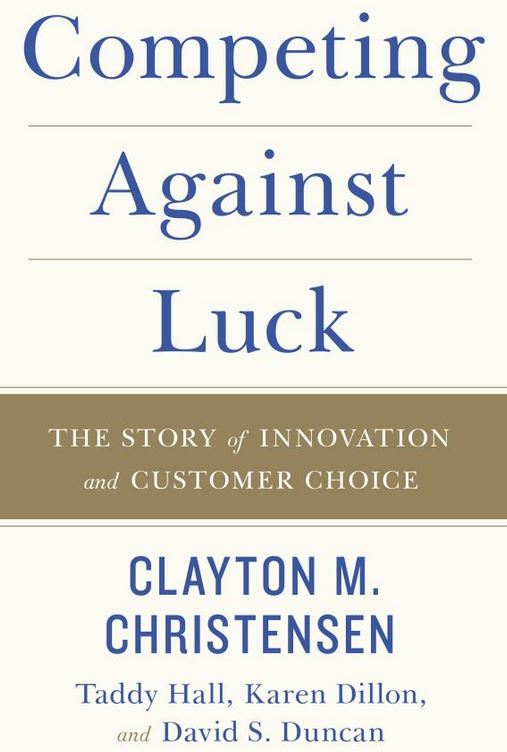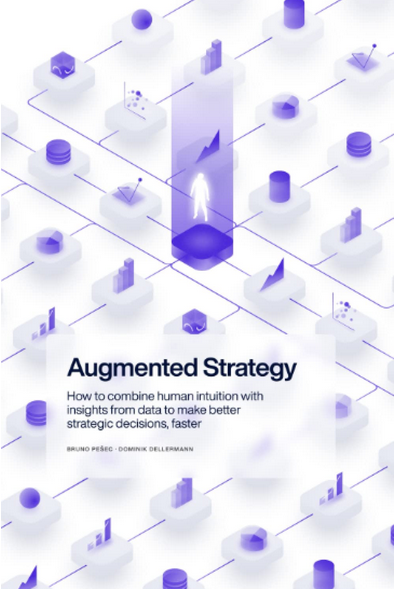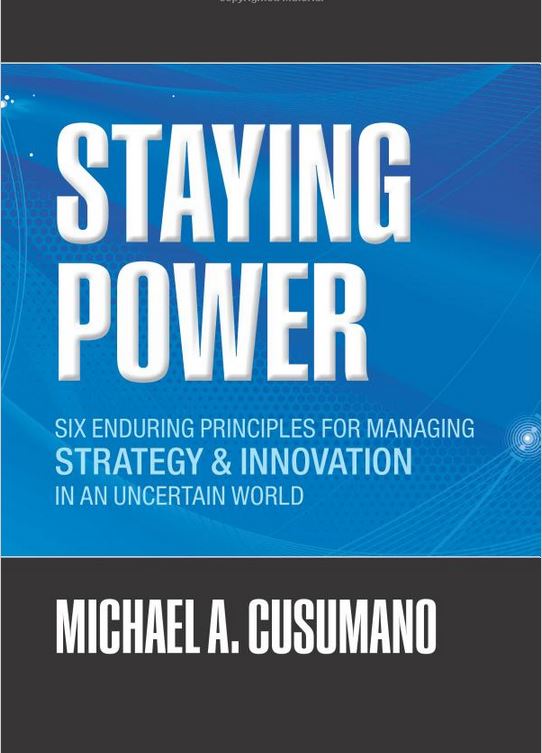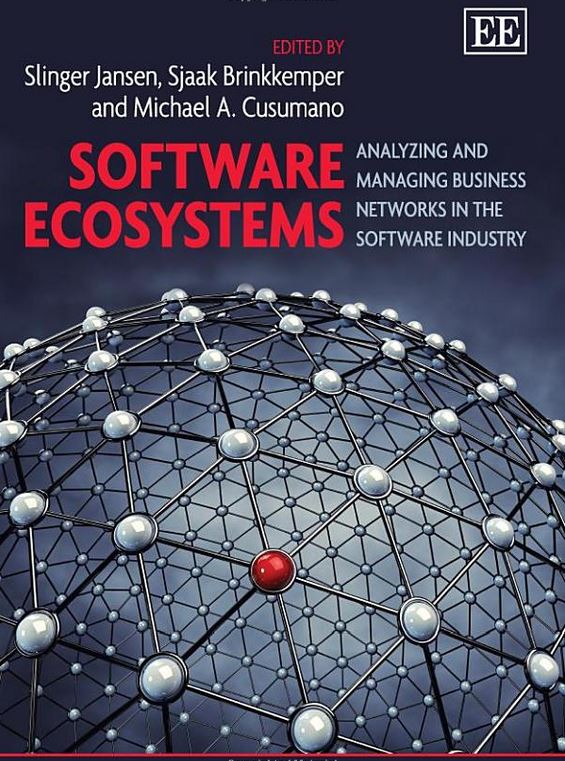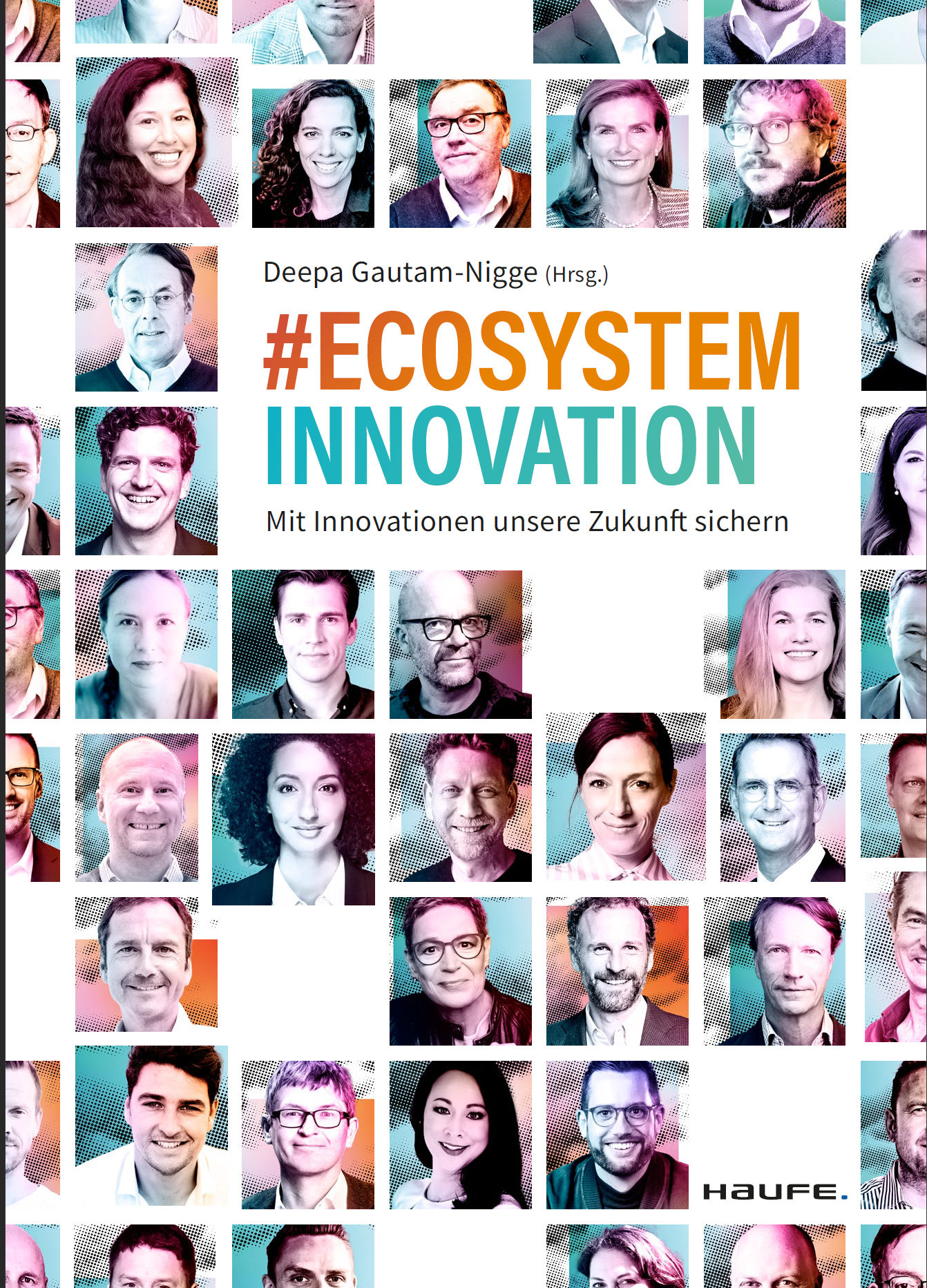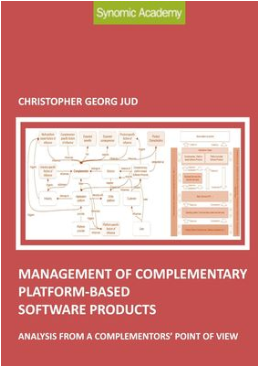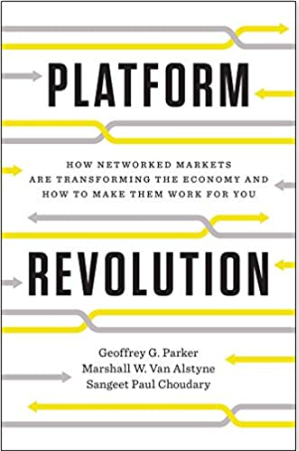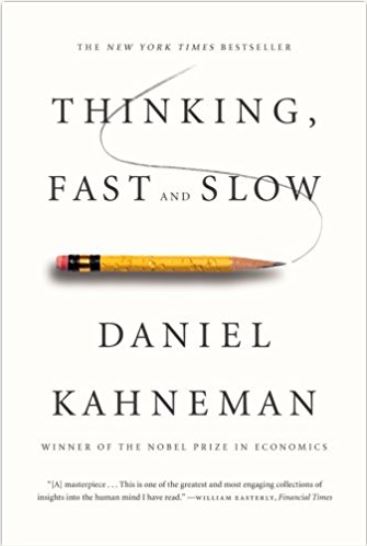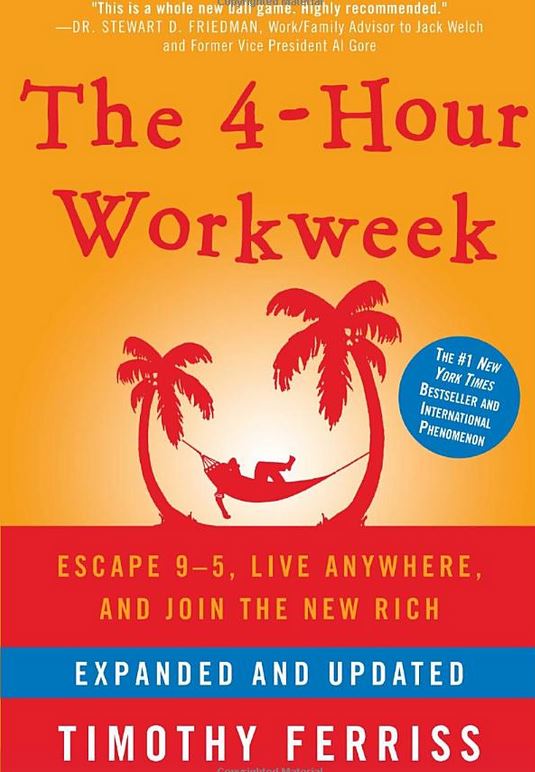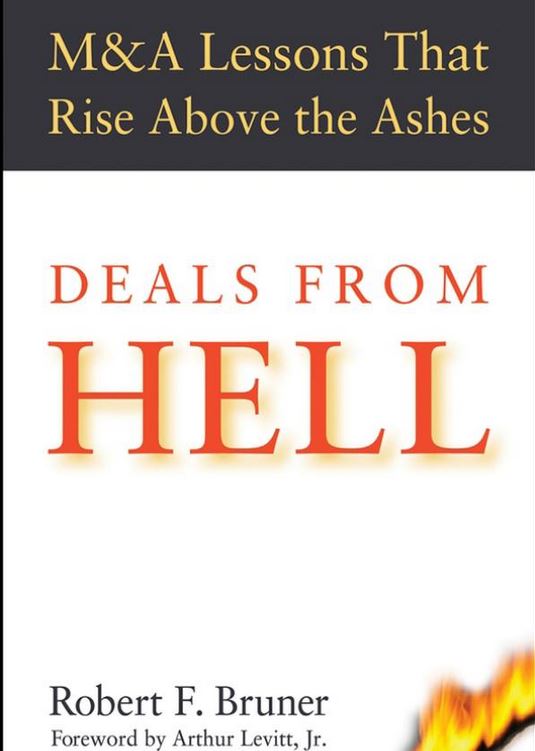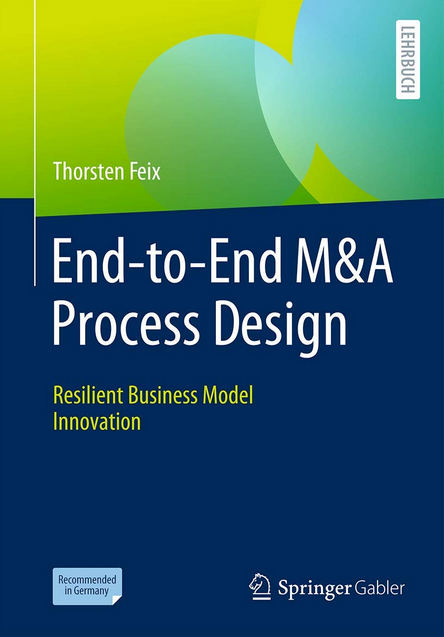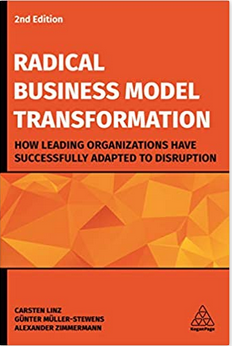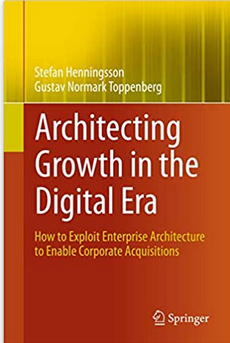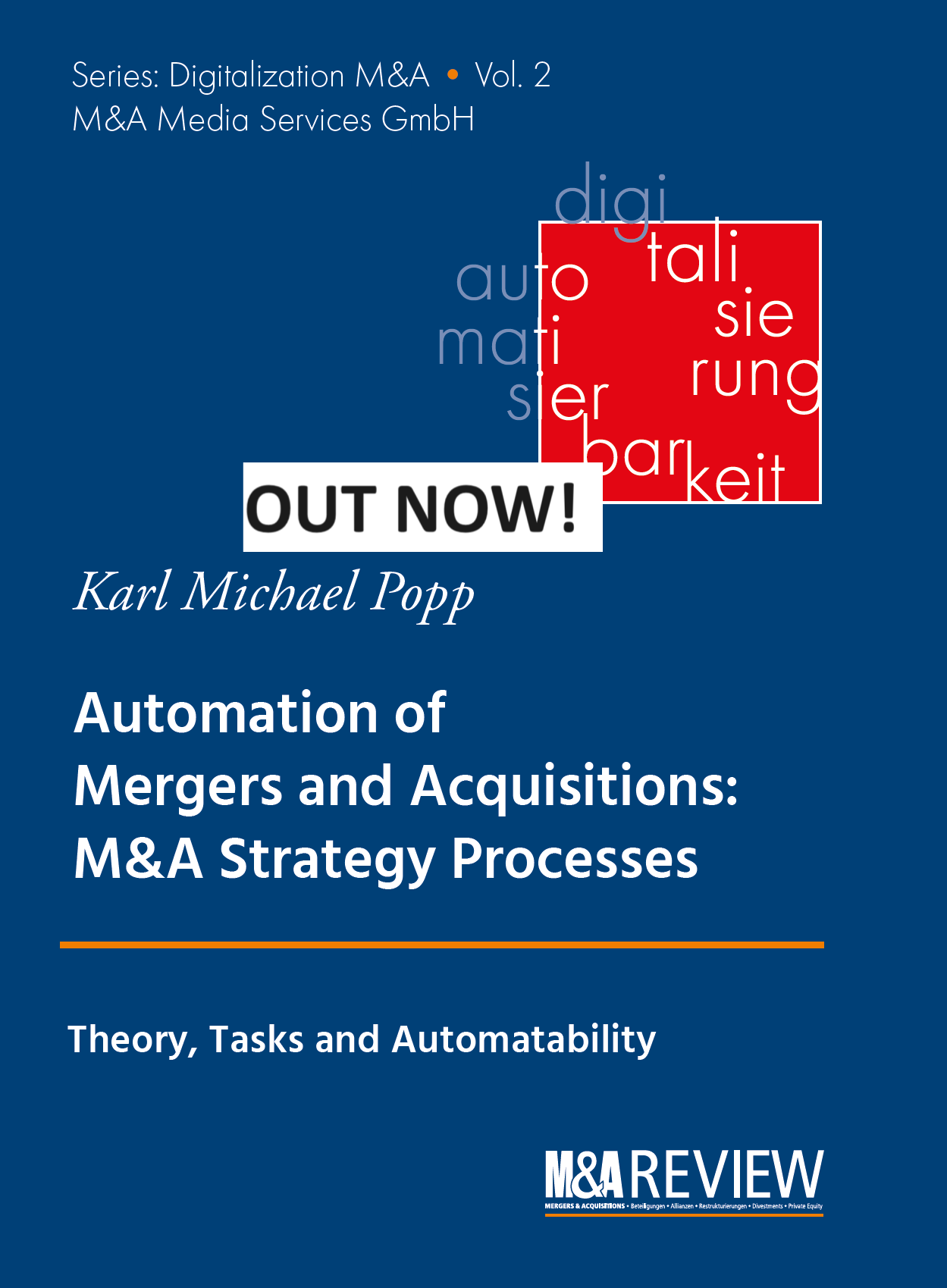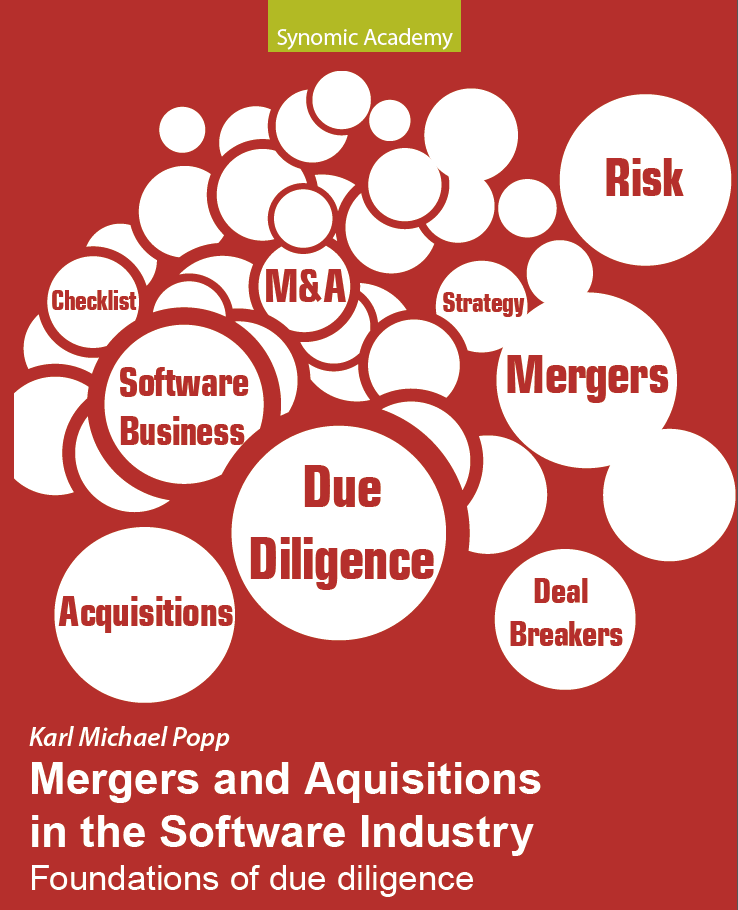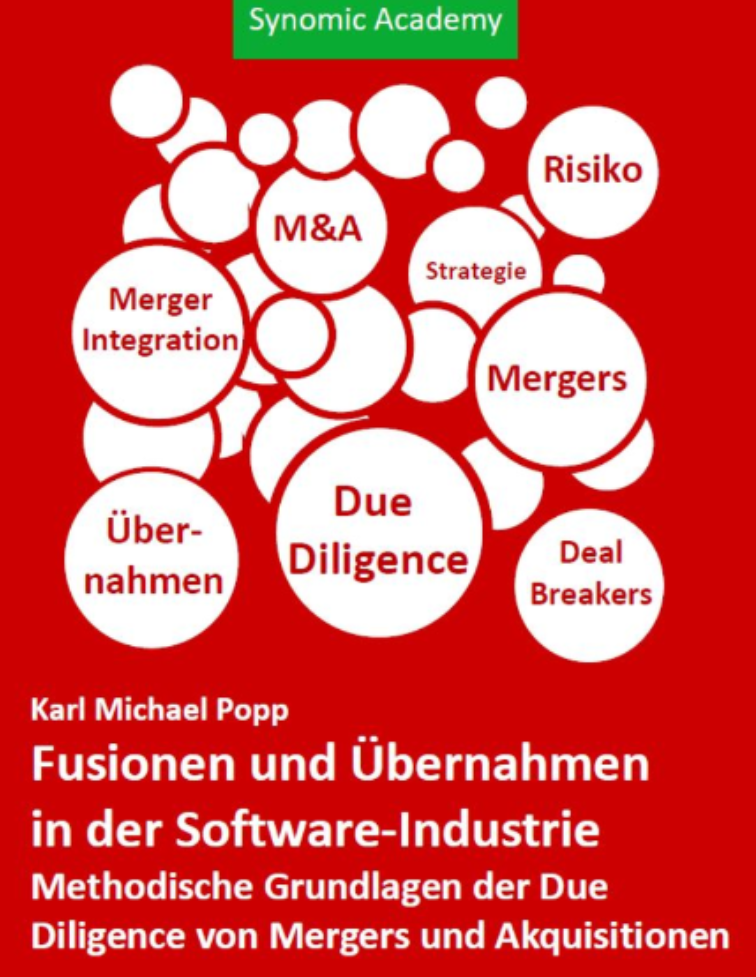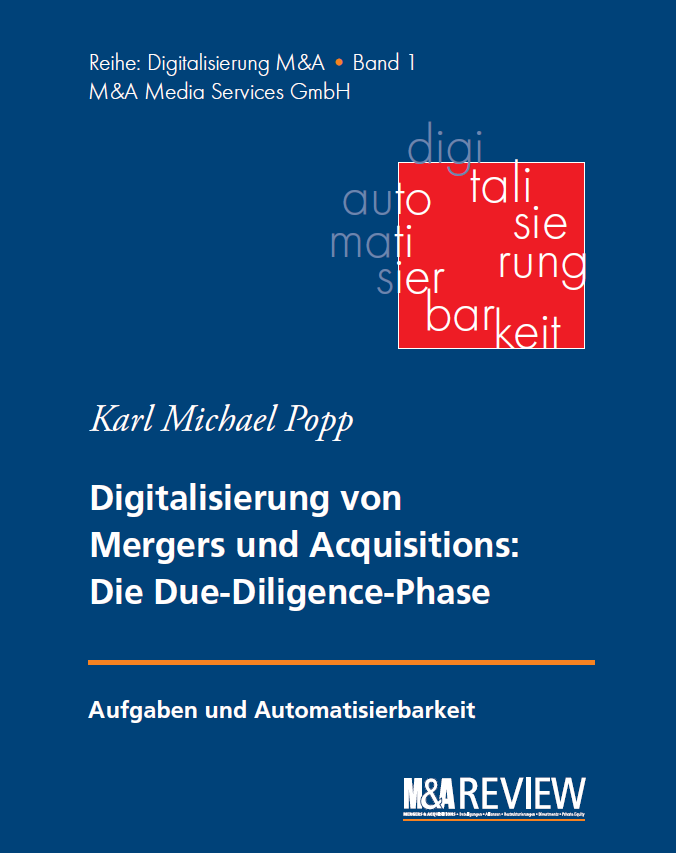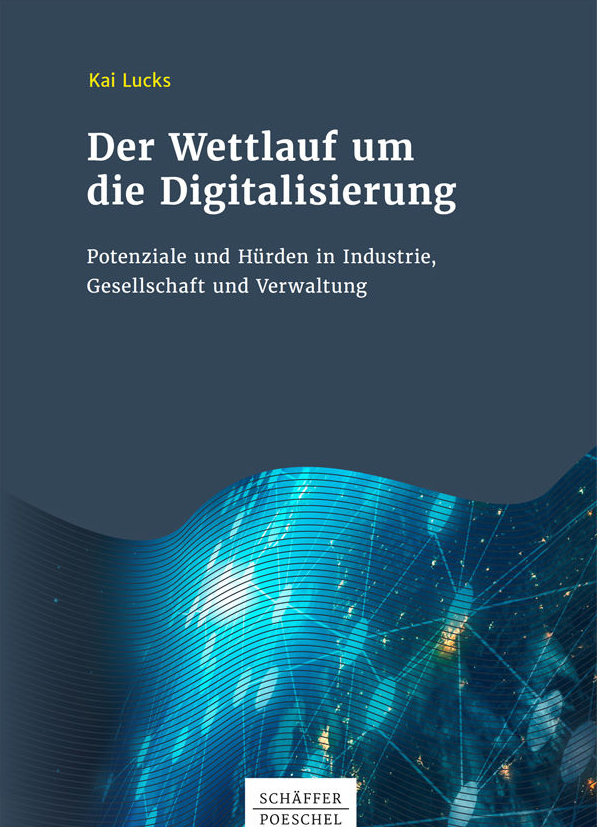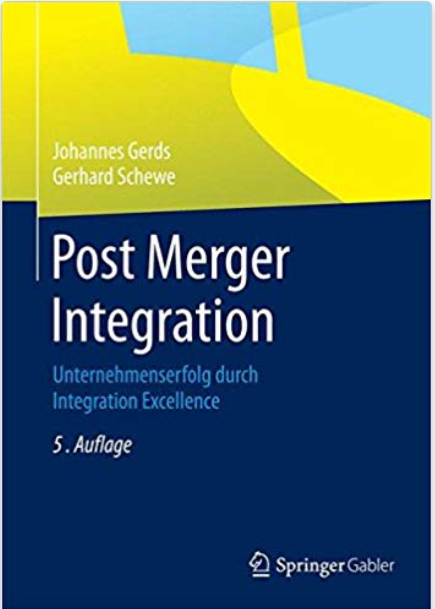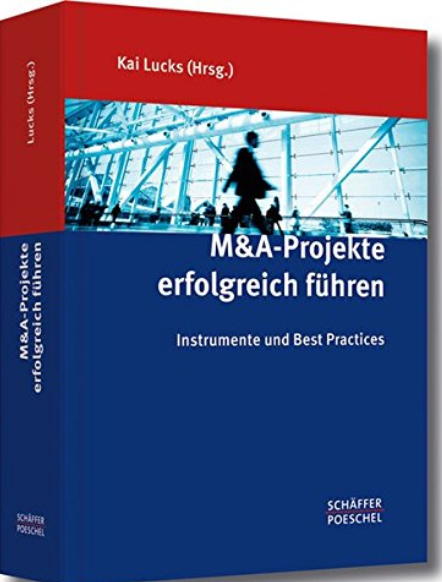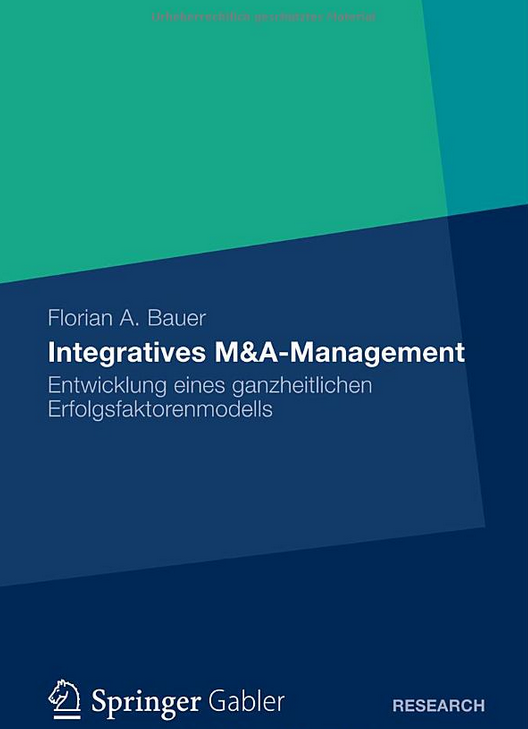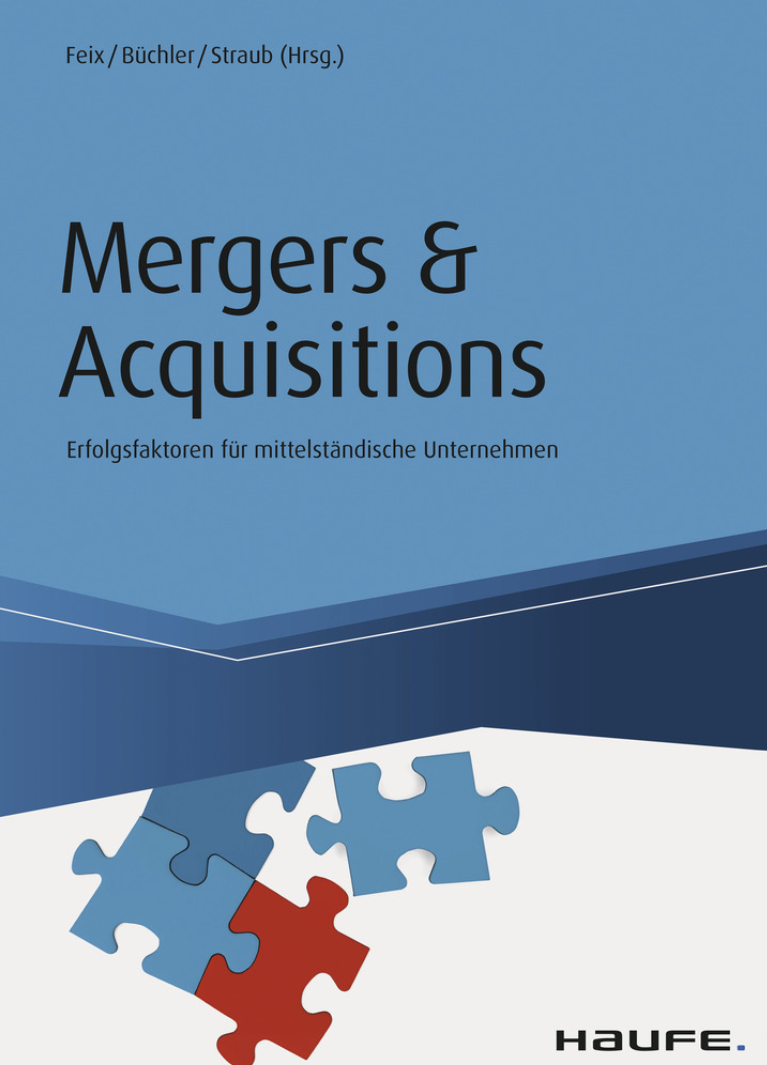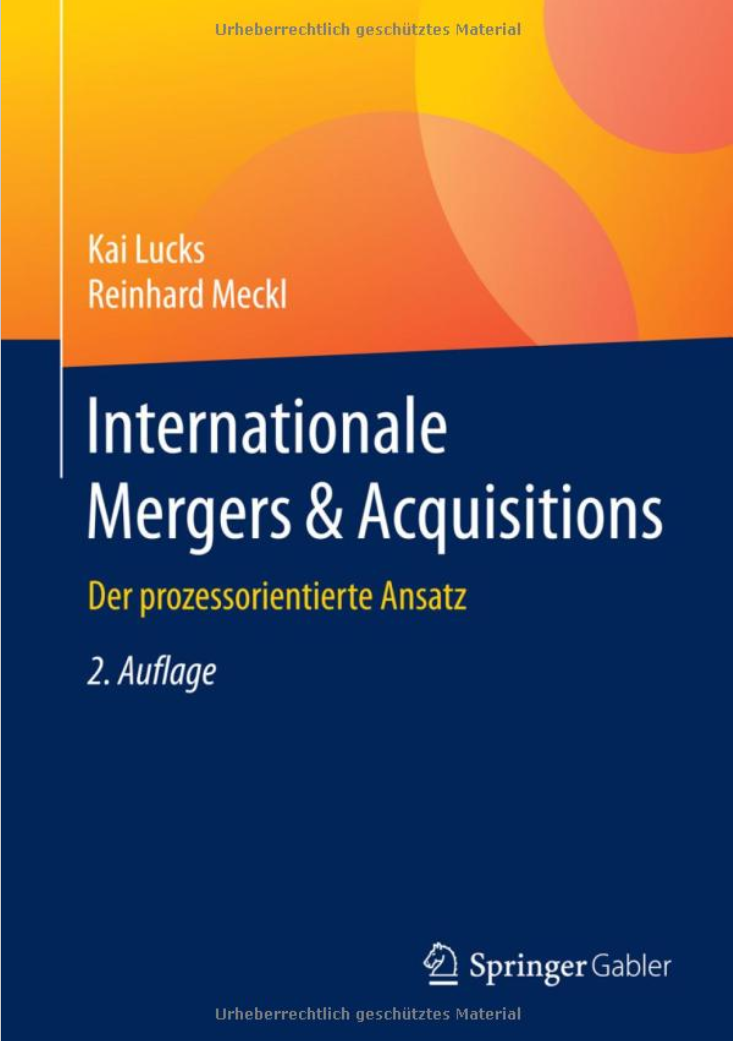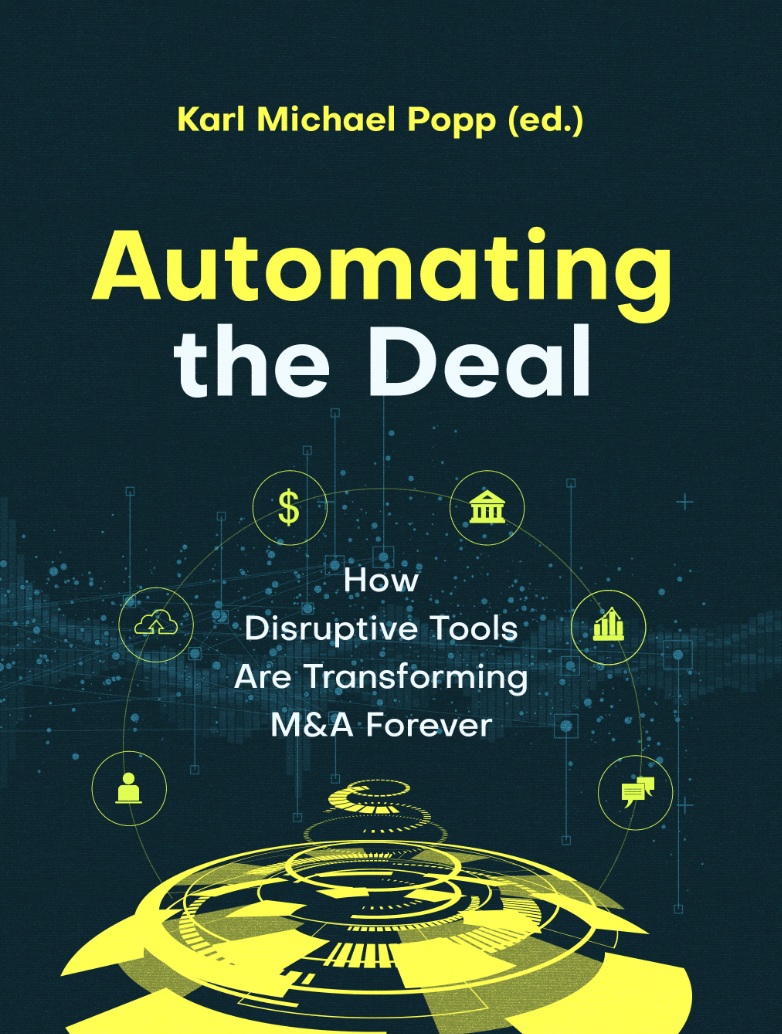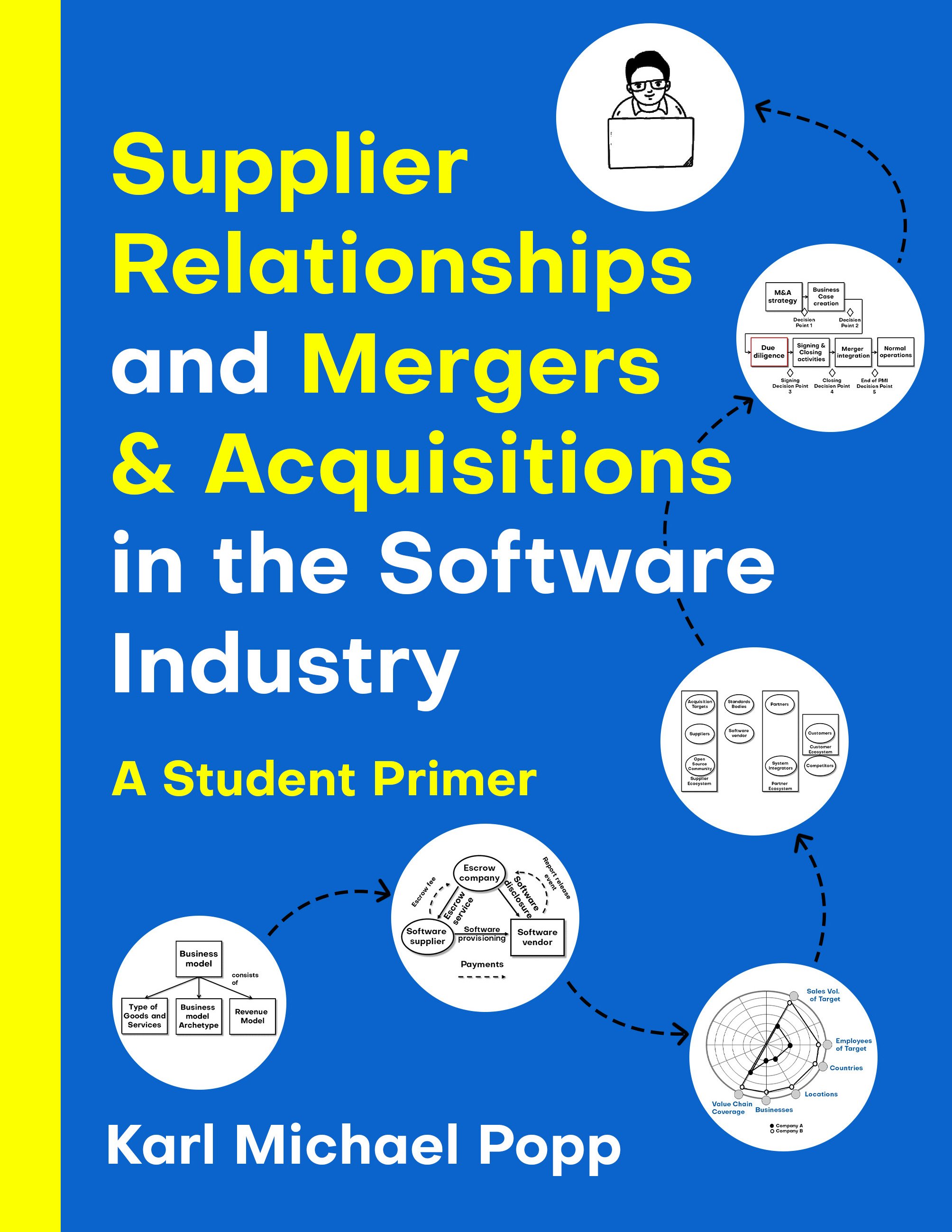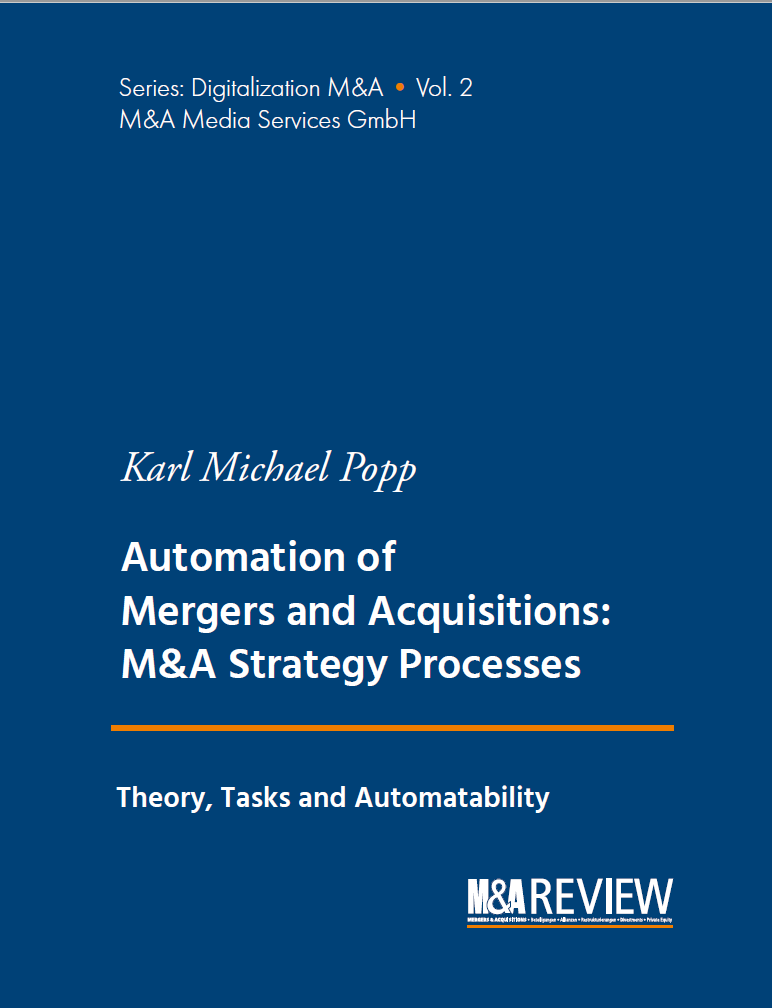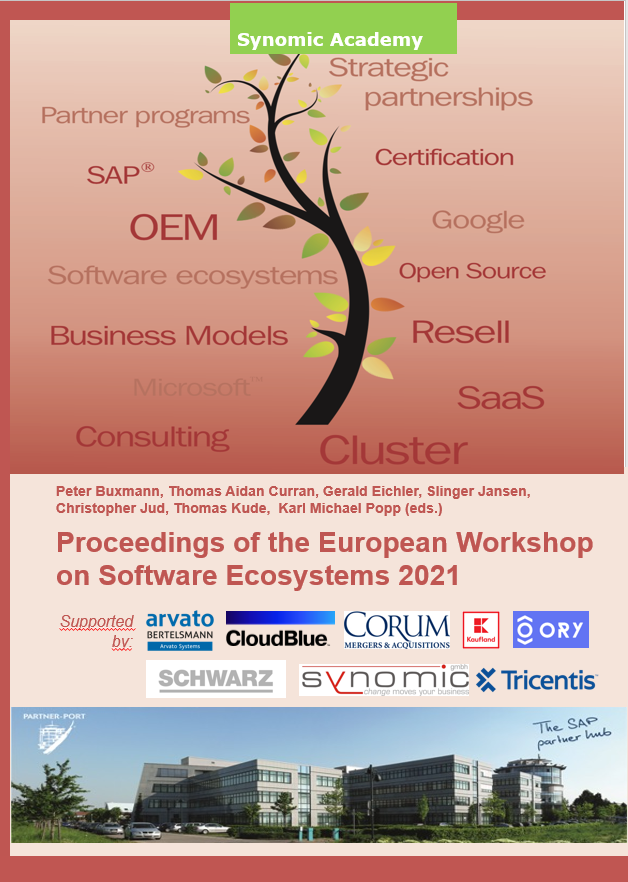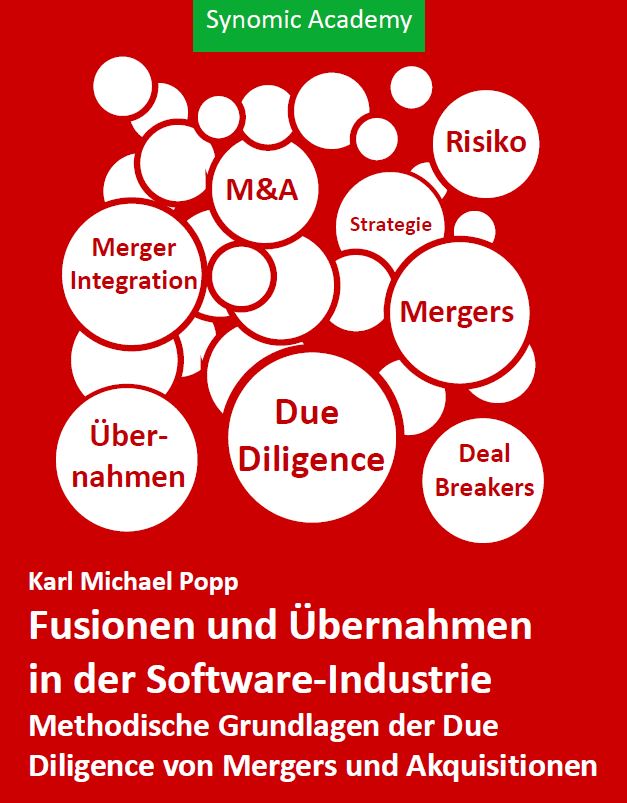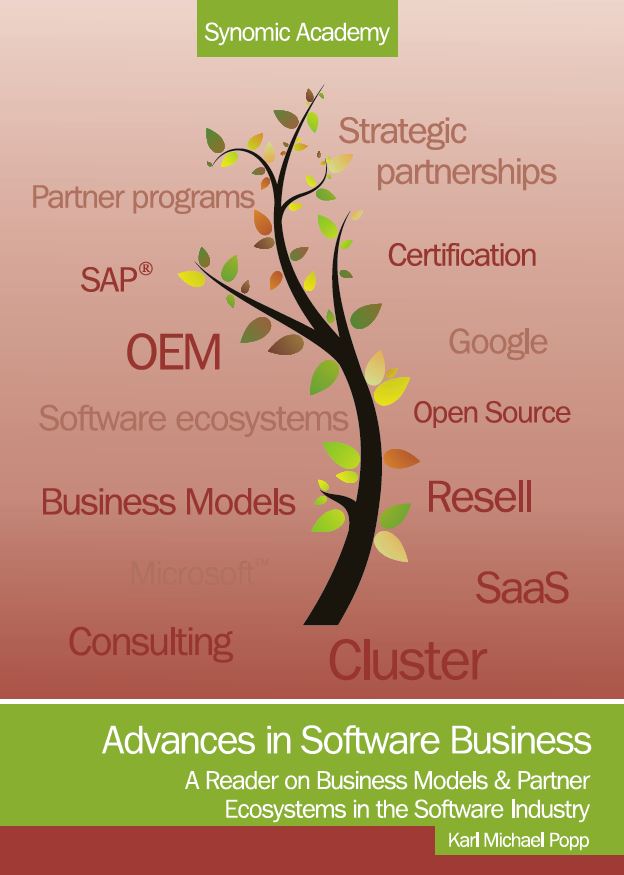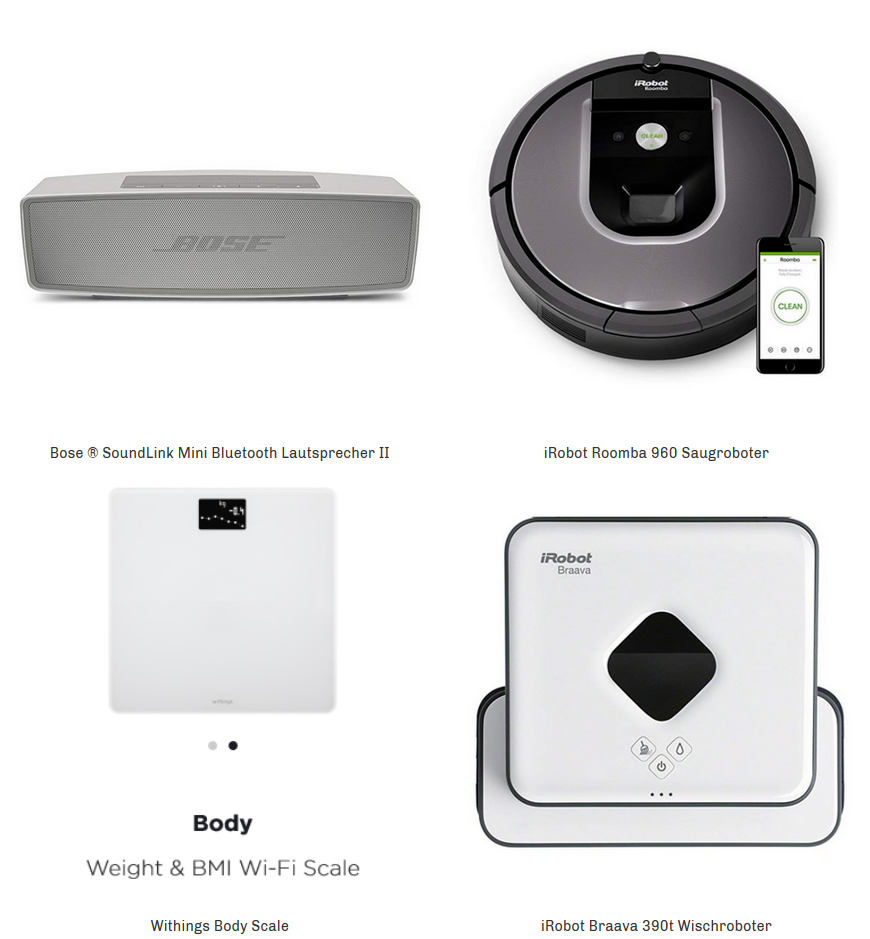Nouveau livre : Bases méthodiques pour l'automatisation des M&A
Les praticiens des fusions et acquisitions ont besoin de solutions aux problèmes suivants liés à la numérisation des processus de fusion et d'acquisition :
Il n'est pas clair ce qui doit être numérisé exactement. Quelles sont les tâches, peuvent-elles être automatisées et comment peuvent-elles être numérisées ?
Le potentiel de numérisation dans le cadre du processus de fusion et d'acquisition n'est pas clair. Quelles sont les tâches qui peuvent être numérisées ? Le potentiel de numérisation réside dans l'automatisation (partielle) de tâches qui ne sont pas automatisées aujourd'hui.
Les possibilités de numérisation ne sont pas transparentes. Quels sont les outils disponibles pour numériser les tâches individuelles ?
Ces problèmes sont abordés et des solutions sont présentées dans le nouveau livre présenté ici. Il contient les bases essentielles de la numérisation des fusions et acquisitions.
Cliquez ici et commandez
Les bases de la numérisation des fusions et acquisitions
Une nouvelle approche de la diligence raisonnable.
Spécification complète de toutes les tâches, y compris leurs objectifs et leur automatisation.
Modèle d'entreprise. Conscient des risques, planification précoce de l'intégration.
Convient à toutes les industries.
Les meilleures pratiques basées sur de nombreuses acquisitions.
Cliquez ici et commandez
Ce qui est fondamentalement nouveau dans ce livre
Un contrôle préalable du modèle commercial est introduit, qui porte sur le modèle commercial de la cible et sa compatibilité avec le modèle commercial de l'acheteur.
Un modèle opérationnel de diligence raisonnable est introduit, qui examine la mise en œuvre du modèle commercial à l'aide des ressources d'une organisation. Les ressources peuvent être des employés, des machines ou des ordinateurs.
Une nouvelle forme de diligence raisonnable stratégique est introduite, qui porte sur la stratégie de la cible et sa compatibilité avec la stratégie de l'acheteur.
Déjà dans le cadre de la diligence raisonnable, les projets d'intégration des fusions sont soumis à un examen sous la forme d'une diligence raisonnable d'intégration des fusions.
Des objectifs factuels et formels sont définis pour toutes les tâches.
Inclusion des applications dans la diligence fonctionnelle au lieu de la seule diligence informatique
Pour la première fois, on tente de décrire un modèle de données complet pour la diligence raisonnable.
Ainsi, vous avez toutes les bases de la numérisation des fusions et acquisitions dans un seul livre.
Cliquez ici et commandez
M&A automation:Leveraging the domain model to map M&A data rooms, process tools easily
The domain model will consist at least of the following parts:
A data model that shows the data objects that are involved in M&A transactions and processes.
A Hierarchy of tasks in different phases of M&A Processes.
APIs for data objects and tasks.
The domain model is a programmable model. This means it is available electronically and can be navigated and displayed as you wish. It is implemented in a set of Prolog facts and rules.
Here is a first view at the phase Due Diligence. It consists of the tasks Target Due Diligence, Integration Approach Blueprint, Merger Integration Due Diligence, Deal Making and Finalize and Approve Due Diligence Business Case. Each tasks will be documented by its goals, the data objects used and a task description.Each of the data objects will be also represented in JSON notation as well as an API documentation.
Here is an example of the documentation of each task. The task Review Merger Integration Project works on concepts
Integration Project Plan, Integration Budget, Stakeholder, Integration Success, Integration Project, Integration Project Resources.It has the goal (that describes the result):
Integration project: tested and verifiedand the objectives, which describe the qualities of the result:
Integration success: maximized Quality: maximizedIt has the following task description:
We review the structure and behaviour of the merger project. It is important to remember that the word "project" means that we have a professional management of integration by professional project managers who are experienced with complex projects and equipped with the skills of a certified project manager. We should also set up a project steering committee that has comprehensive competencies and can make decisions quickly.The word "project" means that we have a project structure plan with tasks to be performed in the project. Buying companies that make frequent acquisitions have a project structure plan template that they adapt to each of the new merger integration projects. This ensures completeness and also allows a correct assessment of whether we have sufficient resources and whether the resources know what to do in the merger.But we also focus on providing answers to questions like: Do we have the right resources for the integration tasks in mergers? Are the resources able to perform the tasks assigned to them? Do the resources have adequate social skills to guide people and convince them to integrate?This is an excerpt of my new book “Automation of Mergers and Acquisitions“.
CLICK OR SCAN THE QR CODE TO ORDER THE BOOK
M&A Automation - Due-Diligence tasks: can they be automated?
How automatable are tasks in Due Diligence?
Every company is pushing the digitalization of business processes. But what about the digitalization possibilities in the M&A process. What is the current status of the automation possibilities? This article is intended to give a brief overview based on selected tasks in the due diligence phase.
Target Due Diligence
This task can be partially automated. Individual actions can be partially automated. Details can be found in the individual subtasks. Activity control is often carried out using project control applications. These can be generic tools such as MS Project or project management tools or data room application systems specialized in the management of M&A projects.
Valuation calculation of the target without synergies
This task can be partially automated. Automated tools are available for the "Calculate evaluation" action, but the data usually has to be compiled and cleaned manually.
Financial due diligence
This task can be partially automated. Usually, financial data is extracted from existing ERP solutions of the target and stored as documents in data room application systems. Evaluations of this data are performed using MS Excel or specialized evaluation calculation applications.
Legal due diligence
This task can be partially automated. Fully automated tools are available for individual actions, such as the automatic analysis of contract documents. Other actions such as the evaluation and assessment of contracts must not be automated.
Tax due diligence
This task can be partially automated. While data can be extracted from existing ERP solutions, no automated evaluation of tax information is performed.
Operations Due Diligence
This task can be partially automated. Individual actions can be partially automated. Details can be found in the individual subtasks.
Due-Diligence of the production
This task can be partially automated. The action control is usually not automated. Individual actions can be automated.
Human resources due diligence
This task can be partially automated. The analysis of contractual documents, such as employment contract templates, can be automated.
IT due diligence
This task can be partially automated. There are several automated tools for network scanning and inventory creation, as well as vulnerability scanning tools, which today often completely automate manual actions.
Due diligence of intellectual property
This task can be partially automated. There are automated tools for individual actions, e.g. for scanning contracts, which today often completely automate manually executed actions.
Cultural due diligence
This task can be partially automated. The analysis of the sentiment of employees and former employees on social networks and rating portals can be automated. The action "Survey of the cultural status of the target" can be automated.
Business model due diligence
This task can be partially automated. There are tools for semi-automated creation and management of business models. The action "Check the business model" can be automated, but is usually not performed automatically.
Due diligence of the target strategy
This task can be partially automated. However, there are only a few actions for which tools are available. Since strategies today are usually not managed and updated in application systems, automated analysis and evaluation is difficult.
This is an excerpt of my new book “Automation of Mergers and Acquisitions“.
CLICK OR SCAN THE QR CODE TO ORDER THE BOOK
M&A Automation: Due-Diligence of the culture - how can it be automated?
Due-Diligence of the target strategy
Why a task definition?
To enable digitization, we have to define tasks in the M&A process in detail. We use goals and objectives, a description of the task and data objects used by the task. In addition, we list questions used during execution of the tasks to provide more context. In addition we can have a look at the automatability of the task and the automation in practice. That will show us the automation potential we have today. More details will be published in my new book “Foundations of digitization for M&A processes: The Due Diligence Phase“.
The task has the following goal(s):
Target strategy: analyzed
The task has the following formal objectives:
Information asymmetry: minimized
Quality: maximized
Automation capability
This task can be partially automated. However, there are only a few actions for which tools are available. Since strategies today are usually not managed and updated in application systems, automated analysis and evaluation is difficult.
Task description
While the market analysis and the evaluation of potential commercial synergies dominate in the current literature for strategic due diligence , the market analysis and evaluation in our approach is carried out in the GTM due diligence. Hence, a different approach for strategic due diligence is to be taken. The core of the considerations is exclusively the strategy of the target. Assumptions, strategic goals and measures are determined and analysed. The relationship between the business model and the operations model is considered. In comparison to the buyer strategy, the complementarity of the target strategy with the buyer strategy is established. Any strategic risks are identified and evaluated.
The task works with the following data objects:
Target Strategy, Strategic Goal of the Target Company, Strategic Measure of the Target Company, Assignment of Strategic Measures and Goals of the Target Company, Hierarchy of Strategic Goals of the Target Company, Strategic Risks of the Target Company, Strategic Assumptions of the Target, Buyer Strategy, Strategic Measure of the Buyer Company, Assignment of strategic measures and objectives of the buyer company, strategic risks of the buyer company, strategic assumptions of the buyer, strategic objective of the buyer company, hierarchy of strategic objectives of the buyer company, draft of the strategic integration plan, strategy, complementarity of the strategy, strategic synergy.
This is an excerpt of my new book “Automation of Mergers and Acquisitions“.
CLICK OR SCAN THE QR CODE TO ORDER THE BOOK
M&A Automation: Tax Due-Diligence - how digitized is it today?
Tax Due-Diligence
Why a task definition?
To enable digitization, we have to define tasks in the M&A process in detail. We use goals and objectives, a description of the task and data objects used by the task. In addition, we list questions used during execution of the tasks to provide more context. In addition we can have a look at the automatability of the task and the automation in practice. That will show us the automation potential we have today. More details will be published in my new book “Foundations of digitization for M&A processes: The Due Diligence Phase“.
The task has the following goals:
Tax aspects of the target: analyzed
Draft tax integration plan: prepared
Tax effect of the financing concept: analysed
Tax clause in acquisition agreement: prepared
The task has the following objectives:
Risk: minimized
Quality: maximized
Information asymmetry: minimized
Digitization capability
This task can be partially automated. Although data could be extracted from existing ERP solutions, documents are placed in the data room and no automated analysis of tax information is performed.
Task description
Within tax due diligence, we check hypotheses about all tax-relevant transactions of all companies of the target in all countries. This audit is usually carried out by external lawyers and auditors. Besides the examination of tax aspects, such as corporate income tax and trade tax, tax risks are also considered. The result of the tax audit is used to design the tax clause in the acquisition contract. Furthermore, the acquisition financing is analysed and designed with regard to its tax effects. Any actions to be planned with regard to tax aspects are recorded in the draft tax integration plan.
The task works on the following data object types, among others:
Results of the tax due diligence of the target, draft tax integration plan, target company, tax aspects of the target, legal aspect of the target taxes, tax aspects, tax aspects of the target, tax risk of the target, tax clause in the acquisition contract, taxation of the acquisition project Tax effect of the financing concept, tax aspect of the target IT service contract, tax aspect of the application contract of the target, tax aspect of the target hardware contract, tax aspect of the termination contract of the target, tax aspect of the employment contract of external employees of the target Tax aspect of a target patent license, tax aspect of target social security, tax aspect of target IP assignment.
Questions concerning the execution of the task
The task is performed with the following questions, among others:
Does a tax planning exist?
Were the tax returns submitted correctly and on time?
Does the target company have tax advantages? Will they be affected by this transaction?
What do the seller's annual, quarterly and (if available) monthly financial statements for at least the last three years tell us about its financial performance and condition?
Are the seller's financial statements audited, and if so, for how long? Does the audit report contain a "going concern" qualification?
Do the financial statements and related notes list all the seller's liabilities, both current and contingent?
Are there internal controls for financial reporting issues?
Are the company's revenues and margins growing or declining?
Are the vendor's financial projections for the future and underlying assumptions reasonable and realistic?
How do the vendor's projections for the current year compare with the budget approved by management for the same period?
What normalized working capital will be required to continue as a going concern?
This is an excerpt of my new book “Automation of Mergers and Acquisitions“.
CLICK OR SCAN THE QR CODE TO ORDER THE BOOK
M&A automation: comparing businesses of target and acquirer
REQUIREMENT: strategy, business and operations model must be covered by M&A process tools
Acquiring new business
These days, many corporates acquire other companies with new business models or are trying to integrate startups to extend the range of business models and to avoid disruption by other companies. But how do you analyze and compare businesses? Is a coarse analysis on the business model canvas sufficient to determine differences and derive activities for post merger integration? Are there any blind spots? Here are my thoughts:
Comparing businesses
In a holistic view three things describe their business of a company in a complete fashion. The strategy, the business model, and to be operational model.
The strategy defines strategic goals and measures. Strategic goals help to steer running the business, but some strategic goals also determine how to shape the business and how to create the operations for the business. I will discuss how to define and compare strategies in one of my upcoming posts, so let us focus on comparing business models and operational models.
Comparing business models
Using the Business Model Generation Methodology, you can compare two business models by comparing information from each of the model elements: value proposition,channels, customer segments, channels,revenue streams, key activities, key resources, key partners, cost structure. This gives you a set of differences on a type level, which is great. So, say, you find out that the channels are different, one is via a physical store, the other is via online store. Then you can think about leaving them separate or integrate both offerings. For department stores, we saw that combination of channels happening: buy in store, return online; buy online return in store; buy online, pick up in store.
Using the Business Model Generation methodology, you have to be aware that not only the degrees of freedom to build a business model can be the source of differentiation and disruption but also the degrees of freedom to build an operations model, which implements the business model. What is the difference? The business model is a type level model telling you what to do while the operations model is much more concrete model describing how you do it. For the department store example, the operations model would implement how you do online store ordering followed by in-store pick-up.
In addition, the strategic goals tell you how to shape the business model and the operational model. This relationship is not reflected in the Osterwalder model.
For more details on similarities of business models, please see my other blog post on elements and similarity of business and operations models
Detailing the operational model
To describe the operations model of the target and the acquirer we need details on the following core processes, their organizations and information systems:
Revenue generation and collection model or value to cash: how do we bring products to market via channels and how do we collect revenue.
Innovation processes: idea to customer value: how do we innovate.
Production operations model: supply chain to delivery.
Administration operations model: finance, controlling, facilities, HR and other administrative processes.
Keep in mind that the strategic goals and measures have to be applied to the operations model, since some of the goals help you decide how to structure the operations model. Just think about strategic goals “cost leadership” and “quality leadership”. These two goals might be operationalized by establishing operations that focus more on keeping cost low or on keeping quality as high as possible.
As we have shown here, bringing strategy, business model and operations models into one holistic model is a key ingredient for modeling a single business, but as well for comparing businesses while evaluating mergers and acquisitions. Stay tuned for more thought leadership - if you like, you can browse more thoughts on my blog page.
This is an excerpt of my new book “Automation of Mergers and Acquisitions“.
CLICK OR SCAN THE QR CODE TO ORDER THE BOOK
M&A Automation: Automation potential for M&A processes - how to assess it and show the tools
Digitization potential in the M&A process
How can the digitization potential be captured in the M&A process? What information is needed? These questions will be answered here.
Automation and automatability of tasks
Decisions on the digitisation of processes depend on the implementation options available. The goal is the extensive, meaningful automation of operational tasks.
Automation of tasks
To fully automate a business process, both the tasks and the coupling of tasks must be fully automated. In addition to full automation, there are other levels of automation. The automation levels of tasks can be differentiated from the external view of the tasks by the assignment of combinations of task owner types to tasks [cf. FeSi93, 178 f.].
The task owner types available are humans and machine/software (computers, robots, software). If only humans are assigned to a task, it is not automated.
If human and machines are assigned to a task, it is called semi-automated. A task is called fully automated (automated) if it is assigned only to computers, robots or software.
Figure: Degrees of automation of tasks, source: FeSi93
Automated and semi-automated tasks and the associated application systems are relevant for digitisation. Before a task can be automated, the automatability of tasks must be clarified. Only a task that can be automated can also be automated.
Automation of tasks
The following figure describes the execution of a task from an internal perspective. It consists of a set of actions that are linked together and monitored and controlled by an action control.
Figure: Actions and action control, source: FeSi93
Whether a task can be automated depends on the properties of the inside view of a task. To be more precise: the automatability can be described by the automatability of all actions and the action control.
If the inside view can be functionally described, the task can be fully automated. At the current state of the art it is also possible to automate tasks that cannot be functionally described (so-called decision tasks).
With the increasing availability of machine learning, the automation of decision tasks increases. Many decision tasks, which in the past could only be performed by personnel, can now be fully automated. An example is an automated analysis of contract texts for certain features. Action control can also be at least partially automated today. Workflow systems, project control software or even data rooms with action control are available for process and action control.
Digitalisation potential in the M&A process
A digitization potential for a task exists if the degree of automation of the solution process is lower than the automation capability of the solution process. The same applies to task coupling.
The digitization potential for the M&A process is the sum of the digitization potential of all tasks and task linkages.
Requirements for the reference model regarding tasks
The reference model is to describe the tasks, their automatability and show exemplary automation possibilities in the form of software (tools). This enables companies to determine the digitalization potential in the M&A process.
Displaying the tasks together with tools to automate could look like this:
This is an excerpt of my new book “Automation of Mergers and Acquisitions“.
CLICK OR SCAN THE QR CODE TO ORDER THE BOOK
M&A automation: Interview on Automation of M&A Processes
This is the transcript of an interview by Prof. Dr. Kai Lucks with Dr. Karl Michael Popp on the topic of "Digitization of M&A Processes" from July 2020.
Kai Lucks: Mr. Popp, you are propagating a reference model for a digitized M&A process. What is the potential of this model in view of the lack of application knowledge and different M&A procedure models in companies?
Karl-Michael Popp: As the first step, users must understand what is technically feasible today. The second step I see is that the processes in many companies are quite different. So it makes sense to use a reference model. In his current book, Prof. Thorsten Feix has developed a next generation M&A phase and task model. On the basis of this model it is easy to consider which processes can be automated or at least partially automated with the help of which tools. Thus a kind of orientation framework of processes and tools is created. The third step is to consider what can actually be applied from this process and tool map for a specific task in the M&A lifecycle.
Kai Lucks: On the one hand, you speak of individual tools, but in addition, a kind of backbone is needed to which these tools can be connected. Is the typical virtual data room suitable for this?
Karl-Michael Popp: In order to automate the entire process as end-to-end as possible, you need a kind of integration layer that brings together all these specialized tools via interfaces. Besides data rooms, M&A process management applications are suitable candidates for such an integration layer.
Kai Lucks: As innovative M&A tasks, you mention business model due diligence and merger integration due diligence. How should these be used so that they can be applied to achieve successful integration?
Karl-Michael Popp: Currently, the acquisition of new, digital business models and therefore innovative business models is increasing. It is particularly important to compare the business models of target and acquired and, one level below, the operational models. These results have an impact on integration plans and should be transferred to them in the form of data. The implementation of integration plans also requires certain budgets and resources, usually in the form of employees. The earlier the corresponding data is available, the better budgets and resource requirements can be planned.
Question from the podium: How far are we from a data room that can create itself completely on its own from company data, such as data stored in ERP or data warehousing systems?
Karl-Michael Popp: This technology already exists today, but we are not using it. There are very pragmatic reasons for this, because we do not want to and should not make it a reality today. A kind of data vacuum cleaner would be technically easy to implement, but there is also decision-support information that is not available in the ERP systems.
Kai Lucks: I see the main problems with strategic and legal issues. After all, the sellers want to be in control of what data is made available, and an all-encompassing data vacuum cleaner would be difficult, especially since there are limits to data protection laws.
Karl-Michael Popp: It would be conceivable to have a filtered extract that conforms to data protection regulations and is generated automatically. This would do justice to both sides, buyer and seller. Automatic anonymization is already supported by SAP.
This is an interview in line with my new book “Automation of Mergers and Acquisitions“.
CLICK OR SCAN THE QR CODE TO ORDER THE BOOK
Due diligence of intellectual property in the software industry: Definition of the task for digitization
Task Due diligence of intellectual property
Why a task definition?
To enable digitization, we have to define tasks in the M&A process in detail. We use goals and objectives, a description of the task and data objects usedby the task. In addition, we list questions used during execution of the tasks to provide more context.
Goals and objectives of the task
The task has the following objective(s):
legal IP rights: analysed
Draft IP integration plan: prepared
The task has the following formal objectives:
Risk: minimized
Quality: maximized
Information asymmetry: minimized
Task description:
In a holistic IP due diligence, the portfolio of intellectual property rights, the target's relations to all IP sources and the different types of current and future use of intellectual property are examined. For all existing and future uses of all target products and services, the following must be identified: all intellectual property rights and obligations, subsidiary measures, associated fees and payments, compliance processes, potential and existing litigation and infringements in connection with the target and its products and services. All of these shall be reviewed and evaluated to ensure that the Target owns the intellectual property to be sold, as well as third party intellectual property rights of use, and that existing and future uses of the intellectual property are consistent with the IP rights of the Target. In the software industry, the focus is usually on the intellectual property and technical due diligence of software products with respect to, for example, the architecture and quality features of the software products and the cloud service providers and web services used. The open source components and third-party products used in the product are also analyzed.
Questions used when performing the task
The task is performed with the following questions:
Has the software provider taken sufficient measures to ensure that work results of employees and service providers are IP of the target?
Which patents, trademarks, copyrights, title protection and ancillary measures exist and have been taken by the software vendor
What intellectual property clauses are included in customer contracts and cooperation agreements to ensure that none of the intellectual property rights or trade secrets of the target company are "lost"?
What intellectual property of third parties (e.g. open source software) has been and is being used by the Target and does the Target have the corresponding rights of use?
For each supplier relationship, is it ensured that the Target has sufficient rights to use third party intellectual property rights that are consistent with the existing and future forms of use intended by the buyer?
Data objects of the task
The task works on the following data object types:
draft IP integration plan, intellectual property, brand, trademark, trademark authority, legal aspect of a brand or trademark, IP licensing agreement, legal aspect of an IP licensing agreement, licensing agreement to partner, legal aspect of licensing agreement to partner, legal aspect of patent license, third party patent, patent license, IP assignments of the target, patent, patent authority.
This is an excerpt of my new book “Automation of Mergers and Acquisitions“.
CLICK OR SCAN THE QR CODE TO ORDER THE BOOK
M&A automation: Definition of the task "IT due diligence"
Definition of the task IT Due Diligence
Why a task definition?
To enable digitization, we have to define tasks in the M&A process in detail. We use goals and objectives, a description of the task and data objects used by the task. In addition, we list questions used during execution of the tasks to provide more context. In addition we can have a look at the automatability of the task and the automation in practice. That will show us the automation potential we have today. More details will be published in my new book “Foundations of digitization for M&A processes: The Due Diligence Phase“.
Goals and objectives of the task IT Due Diligence
The task has the following goals (planned results):
Draft IT integration plan: prepared
IT infrastructure of the target: analysed
Application systems of the target company: analysed
The task has the following objectives:
Information asymmetry: minimized
Integration success: maximized
Risk: minimized
Automatability and automation
While this task can be semi-automated, the level of automation in practice is usually low
This task is semi-automatable. There are several automated network scanning and inventory creation tools as well as security vulnerability scanning tools that fully automate actions that often are carried out manually today.
In practice, this task is usually not automated, not even in parts.
Task description
The IT due diligence includes the analysis of IT resources as well as application systems and communication systems of the company. In addition, IT costs and IT budgets are analyzed and the projects planned and running in IT are sifted and analyzed. Security aspects of the target IT are analysed and the risk of the applications, infrastructure and IT projects is assessed. Complementarity and potential synergies between target and buyer IT are evaluated.
The task works on the following data object types
Information technology of the target company, resources for automation of information systems of the target, application systems of the target company, IT infrastructure of the target, risk of the application systems, risk of the IT infrastructure, target IT projects, processes of the target IT, target IT strategy, target IT budget, target IT costs, Target IT Policy, Target Company Hardware, Target Hardware Contract, Legal Aspects of the Hardware Contract, Target IT Software Contracts, Legal Aspects of Target IT Software Contracts, IT Applications, Target Production Application System, Target Application System for Hiring New Employees Payroll application of the tar-gget, application for assessing employee performance, risk of application systems, risk of IT infrastructure, risk of application systems, risk of IT infrastructure, IS automation complementarity, IS automation synergy, resources for automation of information systems of the buyer company, Draft IT integration plan, buyer company information technology, buyer IT projects, buyer IT strategy, buyer IT budget, buyer IT costs, buyer IT costs, buyer company application systems, buyer IT infrastructure, buyer IT processes, buyer IT policy,
This is an excerpt of my new book “Automation of Mergers and Acquisitions“.
CLICK OR SCAN THE QR CODE TO ORDER THE BOOK
New book: Automation of Mergers and Acquisitions: Due Diligence Tasks and Automation
Automation of the M&A process: due diligence tasks and automation
OUT NOW: This new book is will help you on your way to digitizing your M&A process.
M&A practitioners need solutions to the following problems related to the digitization of M&A processes:
It is unclear what exactly needs to be digitized. What are the tasks, can they be automated and how can they be digitised?
The digitisation potential in the M&A process is unclear. Which tasks can be digitized? The digitization potential lies in the (partial) automation of tasks that are not automated today.
The digitization possibilities are not transparent. Which tools are available to digitize individual tasks?
These problem areas are addressed and solutions are presented in the new book presented here.
The book can be ordered with the ISBN 9783750462052.
All in one book for merger automation
All due diligence tasks
Automatability for all tasks
All data needed by tasks
An integration architecture for heterogeneous tools
ISBN 9783750462052
What is fundamentally new in this book
This book is at its core an English translation of the German book “Grundlagen der Digitalisierung von Mergers und Acquisitions: Die Due-Diligence-Phase” published July 2020.
But it is more than that, it has been massively updated and extended and represents the state of the M&A reference model as of October 2020. Major extensions of this book are:
The section showing parts of the data model for due diligence has been extended.
In section 4 describing all tasks of the due diligence phase, additional questions have been added to the following tasks
Design of the new entity NewCo,
Integrated Valuation of NewCo incl. Synergies,
Design of the merger integration plans,
Design of the merger integration project,
Negotiation of the deal.
On a conceptual level, the following is brand-new:
A business model due diligence is introduced, which deals with the business model of the target and its compatibility with the business model of the buyer.
An operations model due diligence is introduced, which looks at the implementation of the business model with the help of resources in an organization. Resources can be employees, machines or computers.
A new form of strategic due diligence is introduced, which deals with the target's strategy and its compatibility with the buyer's strategy.
Already in the due diligence, plans for merger integration are subjected to an examination in the form of a merger integration due diligence.
Goals and objectives are defined for each task.
Inclusion of applications in the functional due diligence instead of only in the IT due diligence
For the first time an attempt is being made to describe a complete data model for due diligence.
The book can be ordered with the ISBN 9783750462052.
All in one book for the digitization of M&A
A new, fresh approach to due diligence.
Complete specification of all tasks including their objectives and automation.
Business model driven. Risk conscious, early integration planning.
Suitable for all industries.
Best practices based on many acquisitions.
Goal and target audience of the book
The goal of the book is to structure the application domain "M&A Process" in an easily understandable model.
This book can be used as follows:
Determine the tasks to be digitized: This book describes almost all tasks in the due diligence process. The tasks relevant for a company can be selected and then automated in a targeted manner.
Overview of digitization options for the M&A process: The automation options described for the tasks provide an overview of which tasks in the M&A process can already be automated today and how.
Determine the digitization potential of M&A processes: The methodology contained in this book and the details of the tasks, their automation capabilities and automation options allow you to determine the digitization potential.
Familiarization with M&A processes: In this book, all tasks in the Due Diligence phase are documented with their objectives, a description and with questions during execution. This enables a quick familiarization with the details of the due diligence.
Target Audience
The target group are managers and employees of strategy and M&A departments, persons responsible for post-merger integration and other practitioners, but also students and teachers in the field of M&A.
The book will be published shortly with the ISBN 9783750462052. Sign up below and i will notify you when the book is available.
About the author
Dr. Karl Michael Popp is a member of the Corporate Development and Strategy Team in the Office of the CEO at SAP SE in Germany. In his twenty-five year career at large and small software companies, he has worked on over 50 strategic partnerships and over thirty acquisitions and successful merger integrations. Karl is a speaker, author on software and platform business models, software ecosystems and merger automation and runs workshops on software ecosystems and merger integration.
This is my new book “Automation of Mergers and Acquisitions“.
CLICK OR SCAN THE QR CODE TO ORDER THE BOOK
M&A Automation: Finding potential acquisition targets
Findin potential acquisition targets - a task definition
Why a task definition?
To enable digitization, we have to define tasks in the M&A process in detail. We use goals and objectives, a description of the task and data objects used by the task. In addition, we list questions used during execution of the tasks to provide more context. In addition we can have a look at the automatability of the task and the automation in practice. That will show us the automation potential we have today. More details will be published in my new book “Automation of M&A: Due Diligence Tasks and Automation“.
The task has the following goal(s):
Longlist of targets: created
The task has the following objectives:
Information asymmetry: minimized
Automatability
This task is partially automatable.
Tools are available.
Task description
Finding targets requires a selection of the righ sources, ad definition of selection criteria followed by detailed walkthrough of target candidates and decision which candidates make it onto the longlist of potential targets. You can look for acquisition targets in the company ecosystem, e.g. partners, suppliers and in adjacent markets.
The task consists of the following actions
Define selection criteria and market
Scan sources for potential targets
Review candidates
Decide longlist
The task works on the following data object types, among others:
Target company, Target company, Target locations, Buyer, Longlist of targets, Ecosystem, Product of the target, Sales of the target, Target employees, Target business model.
This is an excerpt of my new book “Automation of Mergers and Acquisitions“.
CLICK OR SCAN THE QR CODE TO ORDER THE BOOK
M&A automation: Definition of the task "Design of the merger integration project"
Design of the merger integration project
Goals and objectives
The task has the following goal(s):
Draft integration project plan: prepared
The task has the following objectives:
Integration success: maximized
Synergy: maximized
Risk: minimized
Automatability
This task is partially automatable. Project planning applications are available for the actions "Plan and simulate project" and "Calculate critical path".
Task description
It is important to remember that the term 'project' implies that we have professional management of the integration by professional project managers who have experience with complex projects and are equipped with the skills of a certified project manager. The term 'project' also implies that we have a work breakdown structure with tasks to be performed in the project. Buying companies that make frequent acquisitions have a work breakdown structure template that they adapt to each of the new merger integration projects. This ensures completeness in terms of coverage of all integration topics and also allows us to assess whether we have sufficient resources and whether the resources know what to do in the integration. In this task, the sequence of integration activities is recorded in the integration project plan. It determines when the individual integration steps can be performed and whether enough resources are available to perform them at that time. The dependencies between the individual integration activities and the resource situation are taken into account. Critical paths are analyzed. IT integration activities play a special role here, on which many other activities depend. Possible risks are listed in the integration plan risks, mitigations are planned and the risks are tracked in the following integration project.
The task works on the following data object types, among others:
Integration project, Integration project plan, Integration Plan Risk, Integration budget, Draft integration project plan, Integration project resources, Organizational plan of the target, Buyer organization, Draft financial integration plan, Task of the draft integration plan for culture, Draft strategy integration plan, Draft production integration plan, Draft plan for future personnel costs, Mapping target jobs to NewCo job descriptions, Draft HR communication plan, Draft HR onboarding plan, Draft HR Training Plan, Draft culture integration plan, Draft tax integration plan, Draft Business Model Integration Plan, Draft Operations Integration Plan, Draft technical integration plan, Draft GTM integration plan, Draft IP Integration Plan, Draft HR Integration Plan, Draft Legal Integration Plan, Draft integration plan for partnerships, Draft IT integration plan, Draft integration plan.
Questions for the execution of the task
The task is executed with the following questions, among others:
Do the subprojects of the integration project cover all aspects of the integration plan?
Which time-based dependencies exist between the sub-integration plans?
Which sequence-based dependencies exist between the sub-integration plans?
Does the chronological sequence of integration activities make sense?
Have all stakeholders of the integration project and their involvement been defined?
How do we motivate stakeholders of the integration project?
How do we motivate key players in the integration project?
How do we award stakeholders and key players in the integration project?
Are we planning to celebrate milestones and successes in the integration project and when?
Are all required resources available at the appropriate time?
Does the load of integration activities at any time adversely impact the NewCo business operations and results?
How do we avoid work overload of key players in the integration project?
What time delays do we expect in the project?
What is the effect of co-determination on project progress?
Were different scenarios of time shifts in individual subprojects, especially IT integration, simulated?
How do we react to any unplanned changes during the project, such as massive price reductions in the sales markets, a pandemic or an economic downturn?
Which integration activities should start before day one and how and who does execute them?
What are the conditions to declare that the integration is completed?
This is an excerpt of my new book “Automation of Mergers and Acquisitions“.
CLICK OR SCAN THE QR CODE TO ORDER THE BOOK
M&A Automation: The Task of Due-Diligence of Intellectual Property
To structure and evolve our profession we need a public, formal description of M&A processes. Let´s start here and look at how such a description looks like.
For each task, goals and formal objectives are specified. In addition, a task description and data object types that are required for task execution are specified. Functional goals describe the result of a task at type level. Formal objectives are used to select a result from a set of results.
The task has the following goals:
IP Legal matters: analyzed
Draft IP integration plan: prepared
The task has the following formal objectives:
Risk: minimized
Quality: maximized
Information asymmetry: minimized
Task description:
In a holistic IP due diligence, the IP portfolio, the target's relationships to all IP sources and the different types of current and future use of intellectual property are examined. For all existing and future uses of all target products and services, all intellectual property rights and obligations, subsidiary measures, related fees and payments, compliance processes, potential and existing litigation and violations related to the target and its products and services must be identified. All of these should be reviewed and evaluated to ensure that the Target owns the intellectual property to be sold and the rights to use the intellectual property of third parties and that the existing and future uses of the intellectual property are consistent with the IP rights of the Target. In the software industry, the focus is usually on intellectual property and technical due diligence of the software products with regard to e.g. the architecture and quality features of the software products as well as the cloud service providers and web services used. The open source components and third-party products used in the product are also analyzed.
Questionnaire
The task is performed with the following questions:
Has the software vendor taken sufficient measures to ensure that the work results of employees and service providers are IP of the target?
Which patents, trademarks, copyrights, title protection and ancillary measures exist and have been taken by the software provider?
What IPR clauses exist in customer contracts and cooperation agreements to ensure that none of the target company's IPRs or trade secrets are "lost"?
Which intellectual property of third parties (e.g. open source software) was and is used by the target and does the target have the corresponding rights of use?
Is it ensured for each supplier relationship that the Target has sufficient rights to use third party intellectual property rights that correspond to the existing and future forms of use intended by the buyer?
The task works on the following data object types:
Draft IP Integration Plan, Intellectual Property, Trademark, Brand, Trademark Authority, Trademark and Brand Authority, Legal Aspect of a Brand or Trademark, IP License Agreement, Legal Aspect of an IP Licensing Agreement, Partner Licensing Agreement, Legal Aspect of the Partner License Agreement, Legal Aspect of the Patent License, Foreign Patent, Patent License, IP Assignments of the Target, Patent, Patent Authority
This is an excerpt of my new book “Automation of Mergers and Acquisitions“.
CLICK OR SCAN THE QR CODE TO ORDER THE BOOK
Automation of M&A: Automation of Designing merger integration plans
REQUIREMENT: merger automation needs task definitions
Design of merger integration plans
While due diligence and dealmaking is well structured domain, the creation and successful executon of merger integrations needs structure and knowledge to be available. Let us have a look at the task of designing merger integration plans, its description and the many questions you should ask when creating such plans.
This is an excerpt of my new book “Automation of Mergers and Acquisitions“. Out soon.
The task has the following goal(s):
Draft integration plan: prepared
The task has the following objectives:
Integration success: maximized
Synergy: maximized
Risk: minimized
Automatability
This task is partially automatable. Project planning applications are available for the 'Design Plan' action.
Task description
The integration plan is created on the basis of the individual integration plan drafts. The drafts for the individual sub-project plans generated in the target due diligence are reviewed and supplemented. The dependencies between the individual integration activities and the resource situation are taken into account. The integration budget required to carry out the project is planned and any risks and their mitigation are documented.
The task works on the following data object types, among others:
Integration project, Integration project plan, Integration Plan Risk, Integration budget, Draft integration project plan, Integration project resources, Organizational plan of the target, Buyer organization, Draft financial integration plan, Task of the draft integration plan for culture, Draft strategy integration plan, Draft production integration plan, Draft plan for future personnel costs, Mapping target jobs to NewCo job descriptions, Draft HR communication plan, Draft HR onboarding plan, Draft HR Training Plan, Draft culture integration plan, Draft tax integration plan, Draft Business Model Integration Plan, Draft Operations Integration Plan, Draft technical integration plan, Draft GTM integration plan, Draft IP Integration Plan, Draft HR Integration Plan, Draft Legal Integration Plan, Draft integration plan for partnerships, Draft IT integration plan, Draft integration plan,
Questions for the execution of the task
The task is executed with the following questions, among others:
Do we want to continue the target business? If so, what are the requirements and non-negotiables to keep the business running?
Do we want to continue the target business models? If so, what are the requirements and non-negotiables to keep the business models up and running?
Do the different parts of the integration plan cover all areas of the business model?
Do we plan changes to the business model of NewCo? If so how should these changes be reflected in the integration plan?
Do the different parts of the integration plan cover all areas of the operations model?
Are changes to the operations model planned? If so how should these changes be reflected in the integration plan?
How do planned synergies influence the NewCo operations model?
Do the different parts of the integration plan cover all areas of strategy?
What are our plans to communicate and implement the NewCo strategy?
What are the steps planned to convert existing strategies for target and acquirer to the NewCo strategy?
Does the production integration plan reflect the goals of the acquisition? How do we make sure we don´t disrupt overall the overall supply chain?
Are changes to the target production model planned? If so how should these changes be reflected in the integration plan?
How do planned synergies influence the NewCo production model?
What should the IT landscape at NewCo look like?
What should the application landscape at NewCo look like?
What are compliance requirements for IT at NewCo?
What changes are needed to the target and acquirer IT functions for NewCo?
What is the impact of planned synergies on NewCo IT and IT integration activities?
Are all end-to-end processes of NewCo supported by end-to-end coverage of applications?
Which data centers or cloud providers should be used and how do we establish the NewCo IT operations?
Do the different parts of the integration plan cover all areas of HR?
What is the impact of planned synergies on NewCo HR function, HR strategy and policies ?
How is employee communication planned?
How are benefits transferred from target to NewCo?
Which HR processes will be established at NewCo and in which steps?
Which HR applications for payroll, hiring etc. will be established?
How will the NewCo organization and its organizational units look like and what are the steps to establish them?
How do we plan to track employee satisfaction and feedback?
How do we intend to communicate elements of the NewCo culture?
What are appropriate steps to establish the GTM strategy, function and applications for NewCo?
What dependencies exist between the parts of the integration plan?
Which changes in the buyer and target since the due diligence are to be taken into account in planning?
What risks do we see for the implementation of the plans and how do we intend to mitigate them?
How do we plan to react to changes outside of NewCo during the implementation of the plan?
How do we plan to react to changes outside of NewCo during the implementation of the plan?
How do we plan to react to changes inside of the acquirer during the implementation of the plan?
How do we plan to react to changes regarding customers during the implementation of the plan?
This is an excerpt of my new book “Automation of Mergers and Acquisitions“.
CLICK OR SCAN THE QR CODE TO ORDER THE BOOK
M&A automation: M&A data model as a sound basis for the M&A API
What is the domain model for M&A?
The domain model will consist at least of the following parts:
A data model that shows the data objects that are involved in M&A transactions and processes.
A Hierarchy of tasks in different phases of M&A Processes.
APIs for data objects and tasks.
The domain model is a programmable model. This means it is available electronically and can be navigated and displayed as you wish. It is implemented in a set of Prolog facts and rules.
Give me an example for a task in the M&A domain model
Here is an example of the documentation of each task. The task Review Merger Integration Project works on data objects:
Integration Project Plan, Integration Budget, Stakeholder, Integration Success, Integration Project, Integration Project Resources.It has the goal (that describes the result):
Integration project: tested and verifiedand the objectives, which describe the qualities of the result:
Integration success: maximized Quality: maximizedIt has the following task description:
We review the structure and behaviour of the merger project. It is important to remember that the word "project" means that we have a professional management of integration by professional project managers who are experienced with complex projects and equipped with the skills of a certified project manager. We should also set up a project steering committee that has comprehensive competencies and can make decisions quickly.The word "project" means that we have a project structure plan with tasks to be performed in the project. Buying companies that make frequent acquisitions have a project structure plan template that they adapt to each of the new merger integration projects. This ensures completeness and also allows a correct assessment of whether we have sufficient resources and whether the resources know what to do in the merger.But we also focus on providing answers to questions like: Do we have the right resources for the integration tasks in mergers? Are the resources able to perform the tasks assigned to them? Do the resources have adequate social skills to guide people and convince them to integrate?What about the data model inside the M&A domain model?
Each of the data objects used by tasks in the M&A domain model are connected in a domain data model. So let us have a look at Integration Project Plan and how it is connected in the data model. Currently the data model contains 376 data objects and many more relationships.
The data model can be used for several purposes. It is used as part of the documentation of tasks and allows a user to understand the task at hand better. Secondly, it can serve as part of a M&A domain API definition that allows to integrate several digital tools within the M&A process.
Example of a data object and its relationships
The task Review Merger Integration Project works on a data object called integration project.
on the left side you see other data objects that have relationships that are incoming. On the right side you see outgoing relationships pointing to other data objects. This data object relates to a stakeholder and an integration plan. So every integration plan has at least one integration project. The integration project might have several risks associated with it. And the integration project has an integration plan.
Since the data model contains 876 data objects, it provides a comprehensive model for implementing tools for the M&A process.
This is an excerpt of my new book “Automation of Mergers and Acquisitions“.
CLICK OR SCAN THE QR CODE TO ORDER THE BOOK
Updated: #mergerautomation: Imagine you can easily review existing tools to automate M&A. Now with several examples
Everybody feels the pressure to digitize. How can you best handle it when you are responsible for the M&A process? Say, you would like to get information which tools are available to automate this task. You could start searching, find some tool vendors, look at a few in more details by coordinating meetings. A tedious process.
Domain model can help
I am working on a domain model, which will be available in an online tool, that does two things: first, define all tasks in the M&A process. Second, it allows to map existing tools to this model, showing which tools are available for which tasks.
What would it look like?
Let us have a look at an example. In the early phase of the M&A process there is a task called pipelining. You want to automate it. This task aims at providing a long list of potential targets and ways to select a subset of targets resulting in a shortlist. So, how would the information about a tool look like? See the information below on a single tool that partially automates this task.
Tool/Service: EY EmbryonicProvider: EYUSP: EY has licensed all expensive databases like CapIQ, CBInsights, ThomsonReuters and has an impressive user experience.EY Embryonic is offered as a consulting service. Great information right? This is just a snippet of the available information. The plan is to list several tools to enable you to select the right tooling to digitize the M&A process.
Here is an example for the tasks Embedded M&A Strategy and Finding potential targets, which are described in detail in my new book. Each of the tasks has several tools assigned which are listed below the task name.
Stay tuned for more news about the domain model and its many uses. Like what you read? Click on one of the topics or buy one of my recommended books below.
M&A digitalization: We need a domain model for M&A
REQUIREMENT: WE NEED A DOMAIN MODEL TO MAP AND INTEGRATE DIFFERENT TOOLS
A domain model for mergers and acquisitions will save us.
The clash of domains
Two companies shall be merged. Two workforces and two administrations have to be aligned, changed and integrated. The first problem that comes up is corporate language and a missing joint domain model and integration plan for people involved but also for applications, companies, locations and countries.
Domain models
Domain models are semantic models that show objects and their relationship in a specific domain. For the M&A domain there will be representations of the M&A strategy, the business case, the integration plan and of course, of both companies to be merged. In addition we need a model of the integration project and all the tasks to be carried out in the different phases of the M&A process. The domain model does not only cover company data, but also data about the M&A process, the involved people and other attributes of the integration like goals and objectives and how they are measured.
Mapping out phases and tasks in the M&A process
Soon , the PMI workgroup of the German M&A association will publish a reference model for all tasks in the M&A process. Here is a short preview of what will be included:
Phases: are part of the M&A process like a due diligence phase or the phase between sign and close.
Tasks: describe the activities to be carried out during the M&A process. Plus there will be goals and objectives for each task that steer the execution of the tasks and measure success.
Concepts: Describe the domain data of the different companies, like companies, departments, the project management domain
Wow, that might be a lot of data types to be modeled, how can you ensure consistency? It all comes together on a task level. Tasks are executed to transform companies to reach an end state, called goal. Goals and objectives will be different by merger and companies involved.
In our case the goal is that the organizations are integrated. Success is measured with two objectives: integration success is maximized and risk is minimized.
task: execute_merger_integration_projectphase: merger integrationgoal: buyer and target organizations are integrated.objectives: integration success is maximized, risk is minimized.task description: Resources for the project will be allocated. and the integration project will be executed.concepts: target, buyer, organization, budget, project plan, resourcesDomain model APIs foster integration of tool vendors
Domain models can be used to drive transparency in the heterogenous world of M&A tools. Tool vendors can easily show the coverage of tasks within the domain model
The description of phases, tasks, concepts, goals etc. will be formalized and can be easily used to generate API descriptions that could be used to integrate different tools in the M&A process like data rooms, project management tools etc. So stay tuned for more progress.
This is an excerpt of my new book “Automation of Mergers and Acquisitions“.
CLICK OR SCAN THE QR CODE TO ORDER THE BOOK
Scaling new business models in corporates: Similarity of M&A and digitization initiatives
Scaling new, unfamiliar business models is a popular topic in large corporates. These new business models might originate from internal or external initiatives, even from acquisitions. How can corporates scale new business models successfully in such situations? Here are my views on it.
Not the usual merger
A widespread perception of mergers and merger integration is that an important objective of such activities is collecting cost synergies or consolidating industries or buying your way up and down the supply chain. Scale and growth are a second thought, if at all. This is different in high tech industries, such as pharma and software. This is different and even more challenging when acquiring and scaling new business models.
Similarity of M&A and Digitization initiatives
A large company acquires a small company to adopt a new business model. An intrapreneur tries to implement a new business model in a large corporate. Both represent the same type of challenge: making an existing organization adopt a new business model. Both can be solved with appropriate, new approaches.
Modulating the corporate immune system
Integrating new business models needs new approaches. The acquirer has to ask the question: “Why have we acquired the company?” If the answer is: “Because they are different” or “Because they have a business model that is new to us”, the acquirer should carefully select integration speed and depth. The acquirer should also make sure that he is preparing his own organization to be ready and able to integrate the new business model. Getting prepared for that might take some time, which influences integration speed.
The acquirer also has to manage the “corporate immune system” which typically rejects new business models due to employee statements like “not invented here” and “that is not the way we do it”.
Change intensity in your court
While in usual merger integration most of the changes happen to the target, this is a different ballgame. A massive change in the operating model of the acquiring organization is needed. Such change is only possible if the large organization is willing and able to change. In addition strong empowerment and executive support is needed to establish such change.
Interview zur Digitalisierung von M&A-Prozessen
Dies ist die Mitschrift eines Interviews vom Vorstandsvorsitzenden des Bundesverbandes M&A, Prof. Dr. Kai Lucks, mit Dr. Karl Michael Popp zum Thema “ Digitalisierung von M&A-Prozessen“ von Juli 2020. Informationen zum Bundesverband M&A finden Sie unter https://www.bm-a.de/
Kai Lucks: Herr Popp, sie propagieren ja ein Referenzmodell für einen digitalisierten M&A-Prozess. Welches Einsatzpotenzial hat dieses Modell angesichts fehlendem Anwendungswissen und unterschiedlichen M&A-Vorgehensmodellen in Unternehmen?
Karl-Michael Popp: Im ersten Schritt müssen die Anwender verstehen, was heute technisch machbar ist. Als zweites Problem sehe ich, dass die Prozesse in vielen Unternehmen doch recht unterschiedlich sind. Da ist es durchaus sinnvoll, ein Referenzmodell zu nutzen. Prof. Thorsten Feix hat in seinem aktuellen Buch ein M&A Phasen- und Aufgabenmodell der nächsten Generation entwickelt. Auf Basis dieses Modells lässt sich gut überlegen, welche Prozesse mit Hilfe welcher Tools automatisiert oder zumindest teilautomatisiert werden können. Somit entsteht eine Art Orientierungsrahmen aus Prozessen und Tools. Als dritten Schritt braucht es die konkrete Überlegung, was aus dieser Prozess- und Tool-Landkarte für eine bestimmte Aufgabe im M&A Lifecycle tatsächlich zur Anwendung kommen kann.
Kai Lucks: Sie sprechen einerseits von einzelnen Tools, doch zusätzlich braucht es eine Art Backbone, an welchen diese Tools andocken. Ist dazu beispielsweise der klassische virtuelle Datenraum geeignet?
Karl-Michael Popp: Um den gesamten Prozess möglichst durchgängig, also End-to-End, zu automatisieren, braucht es ein Art Integrationsschicht, die alle diese spezialisierten Tools über Schnittstellen zusammenführt. Neben den Datenräumen sind auch die M&A Prozessmanagement-Anwendungen geeignete Kandidaten für eine solche Integrationsschicht.
Kai Lucks: Als innovative M&A-Tools nennen Sie ja die Geschäftsmodell Due Diligence sowie die Merger Integration Due Diligence. Wie sollten diese eingesetzt werden, damit diese möglichst bis zum Ende der erfolgreichen Integration eingesetzt werden können?
Karl-Michael Popp: Aktuell nimmt die Akquisition neuer, digitaler und somit innovativer Geschäftsmodelle massiv zu. Dabei ist der Vergleich der Geschäftsmodelle sowie, eine Ebene tiefer, der Operationsmodelle besonders wichtig. Diese Ergebnisse wiederum haben Auswirkungen auf die Integrationspläne und sollten in Form von Daten in diese übertragen werden. Für die Umsetzung von Integrationsplänen bedarf es ja auch eines gewissen Budgets oder Ressourcen, meist in Form von Mitarbeitern. Je frühzeitiger entsprechende Daten vorliegen, desto besser können Budgets und Ressourcenbedarfe geplant werden.
Frage aus dem Podium: Welche Plattformen und Module werden denn bereits heute von SAP für Corporate Business Development angeboten? Und welche Anwendungen werden aktuell entwickelt?
Karl-Michael Popp: Es gibt bereits heute Anwendungen, die strategische Planung erlauben oder die Transformationen wie zum Beispiel Post Merger Integration unterstützen. Speziell auf M&A-Prozesse spezialisierte Anwendungen sind rar. Aber wir verfügen über die Technologien, über Machine Learning generierte Daten in betriebswirtschaftliche Prozesse einzubinden.
Frage aus dem Podium: Wie weit sind wir davon entfernt, dass sich ein Datenraum komplett von selbst aus den Unternehmensdaten, wie diese beispielsweise in ERP- oder Datawarehousing-Systemen vorgehalten werden, erstellen kann?
Karl-Michael Popp: Diese Technologie gibt es heute schon aber wir machen es nicht. Das hat ganz pragmatische Gründe, denn zu einem wollen und sollen wir es heute noch nicht machen. Eine Art Datenstaubsauger wäre technisch leicht realisierbar, aber es geht eben auch um andere entscheidungsunterstützende Informationen, die eben nicht in den ERP-Systemen vorgehalten werden.
Kai Lucks: Die Hauptprobleme sehe ich bei strategischen sowie juristischen Fragestellungen. Die Verkäufer wollen ja die Kontrolle haben, welche Daten zur Verfügung gestellt werden und da wäre ein alles umfassender Datenstaubsauger schwierig, zumal es datenschutzrechtliche Grenzen gibt.
Karl-Michael Popp: Vorstellbar wäre ein datenschutz-konformer und gefilterter Auszug, der automatisiert erstellt wird. Dies würde beiden Seiten, also Käufer und Verkäufer, gerecht werden. Automatische Anonymisierung wird ja bereits von uns unterstützt.









